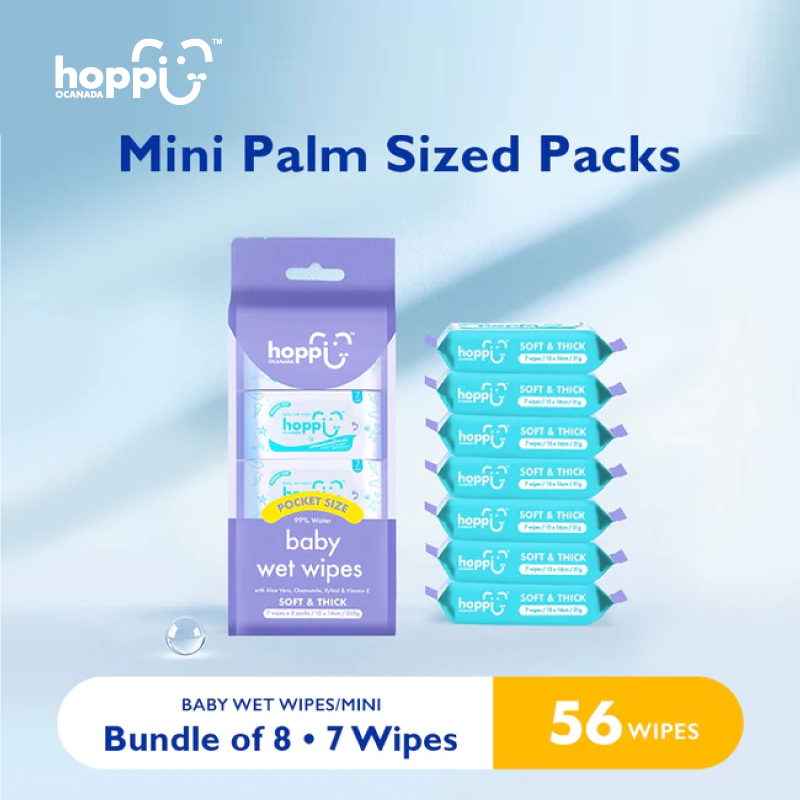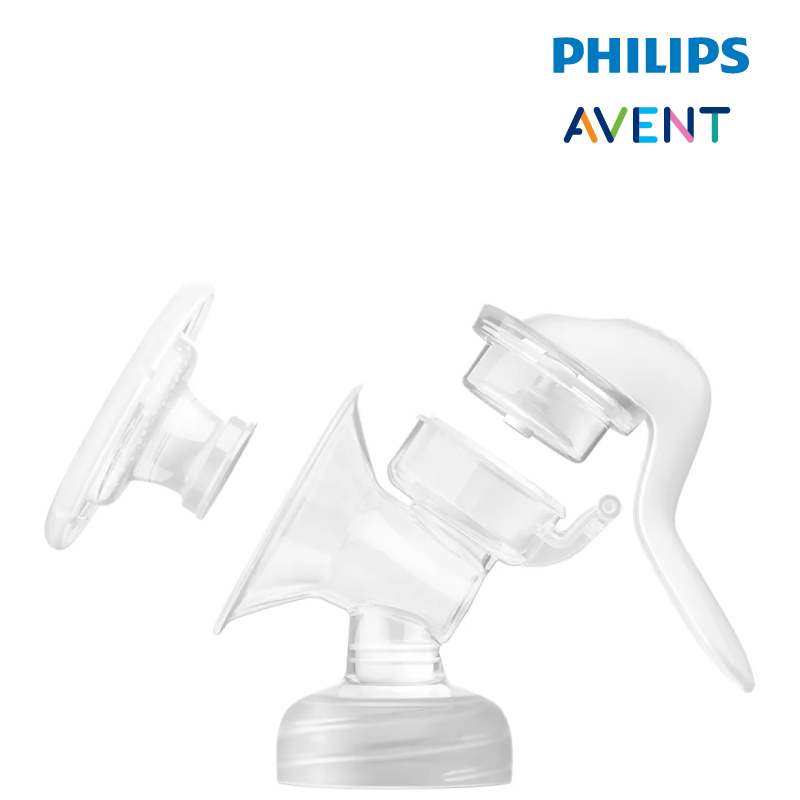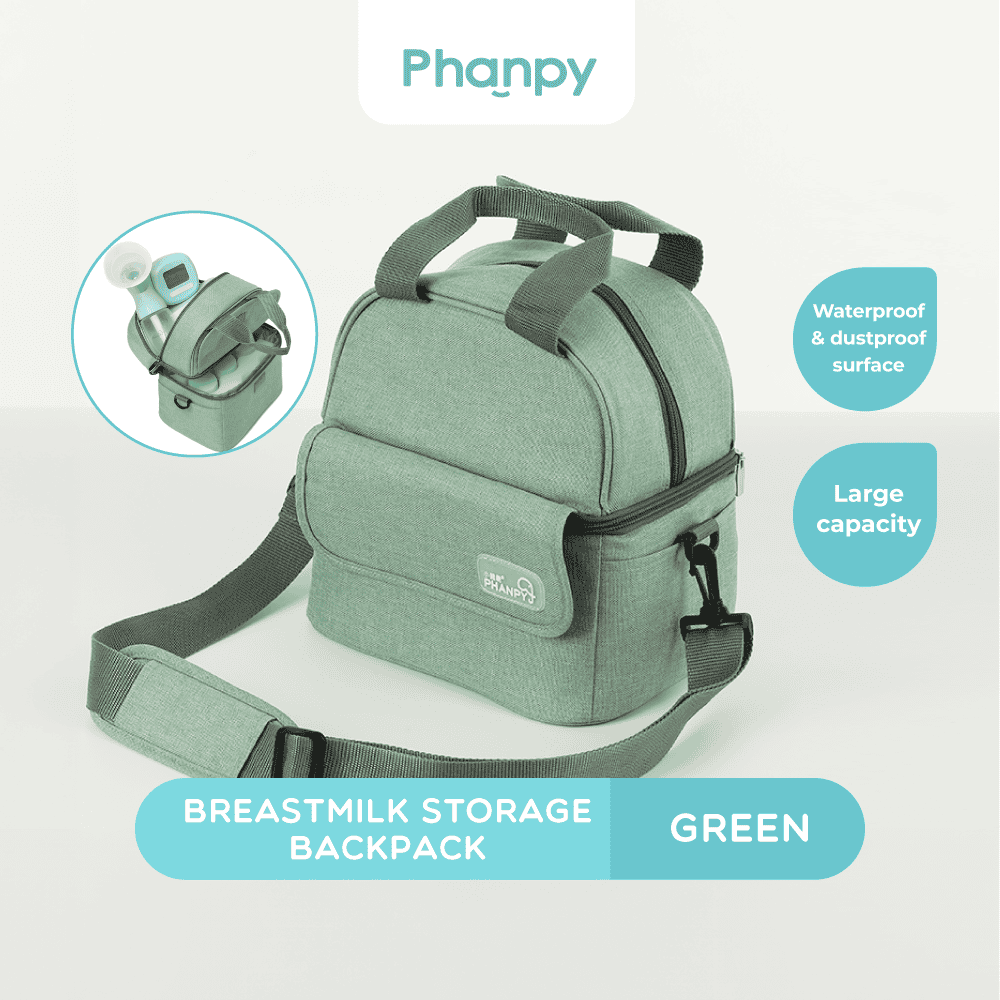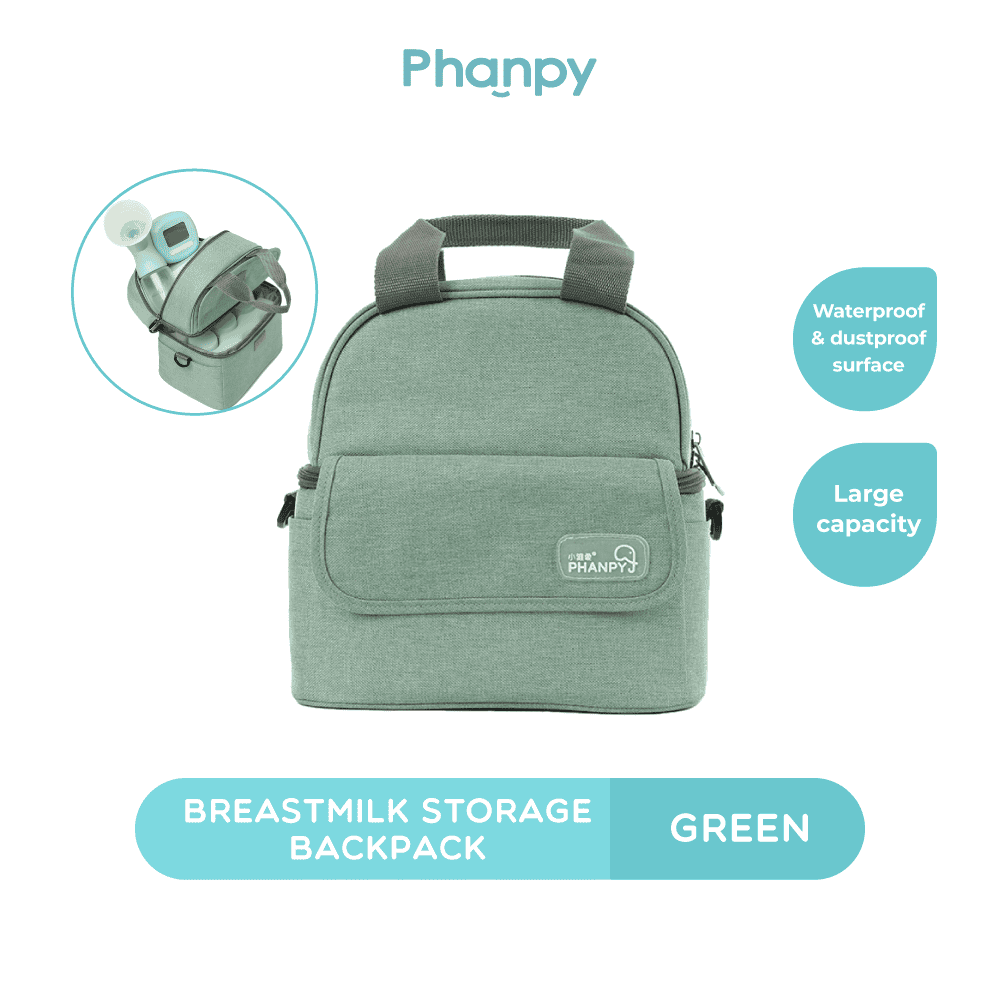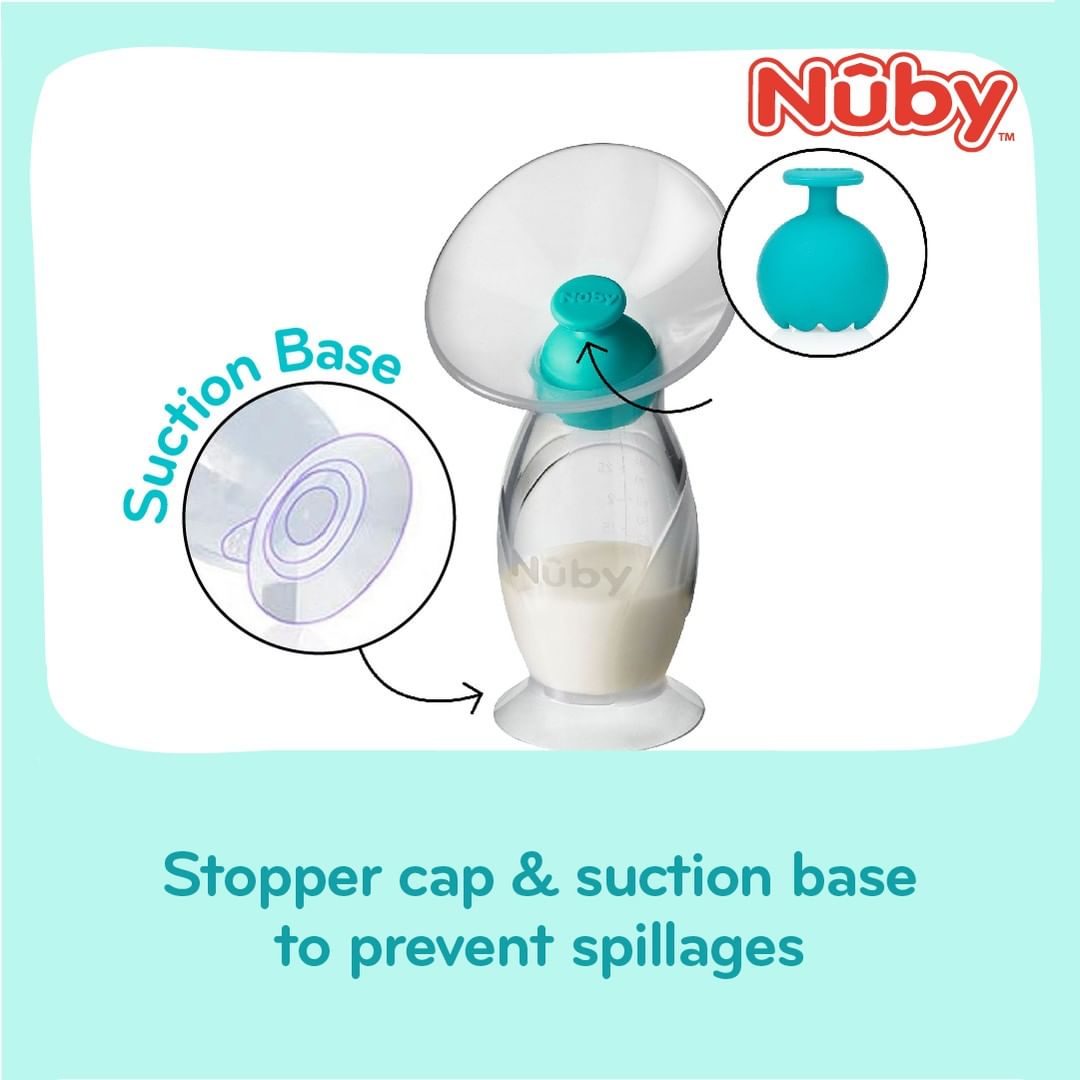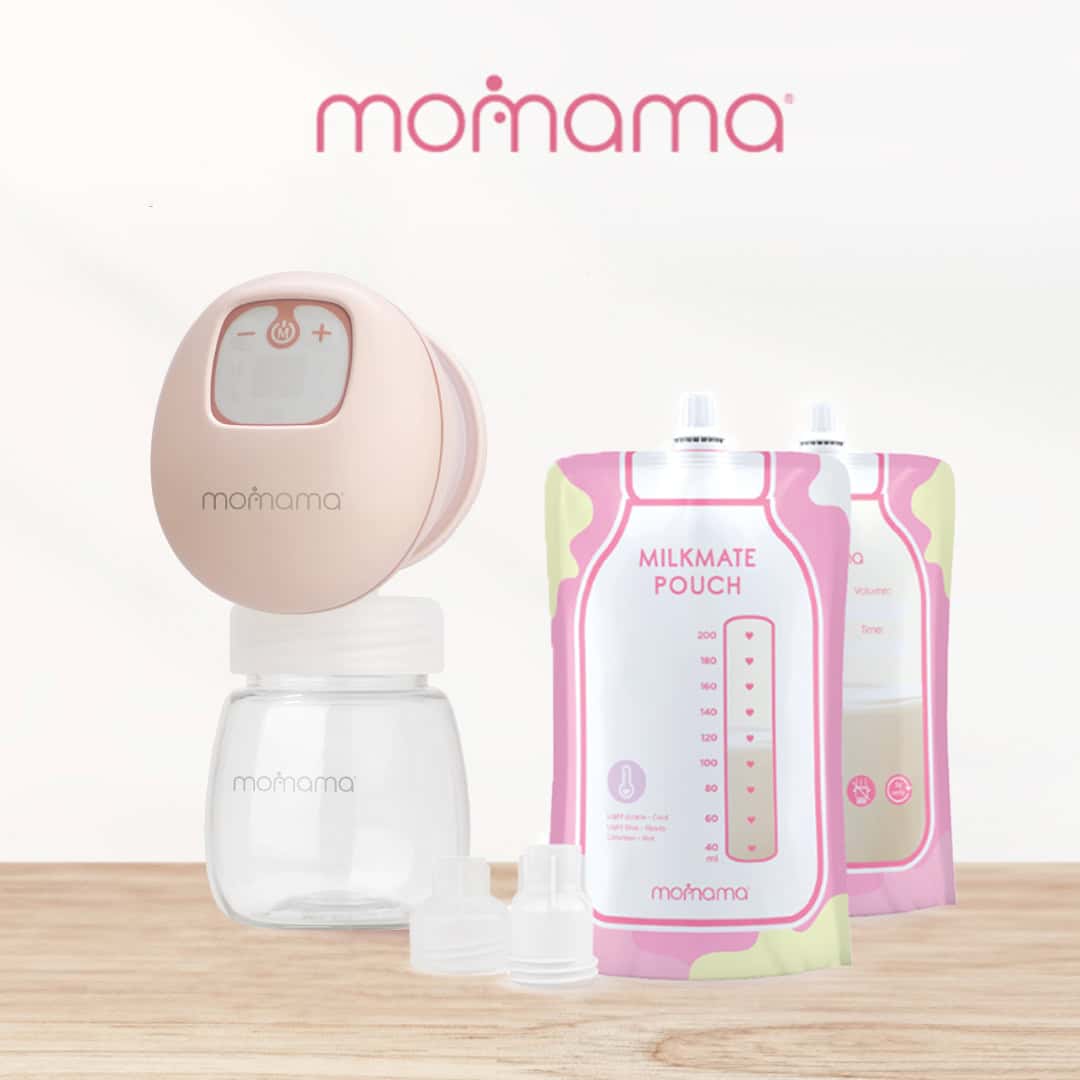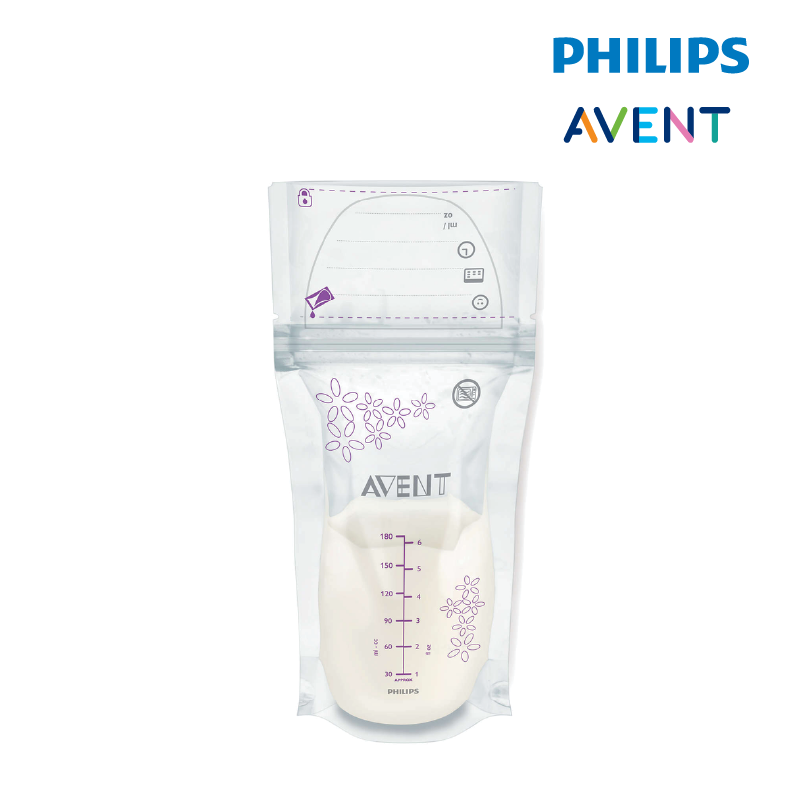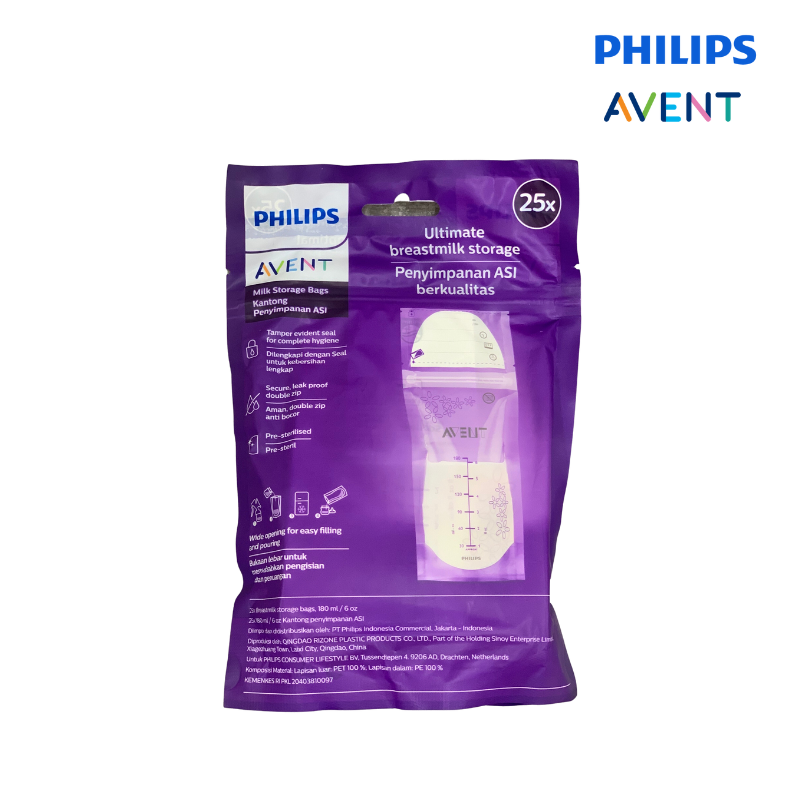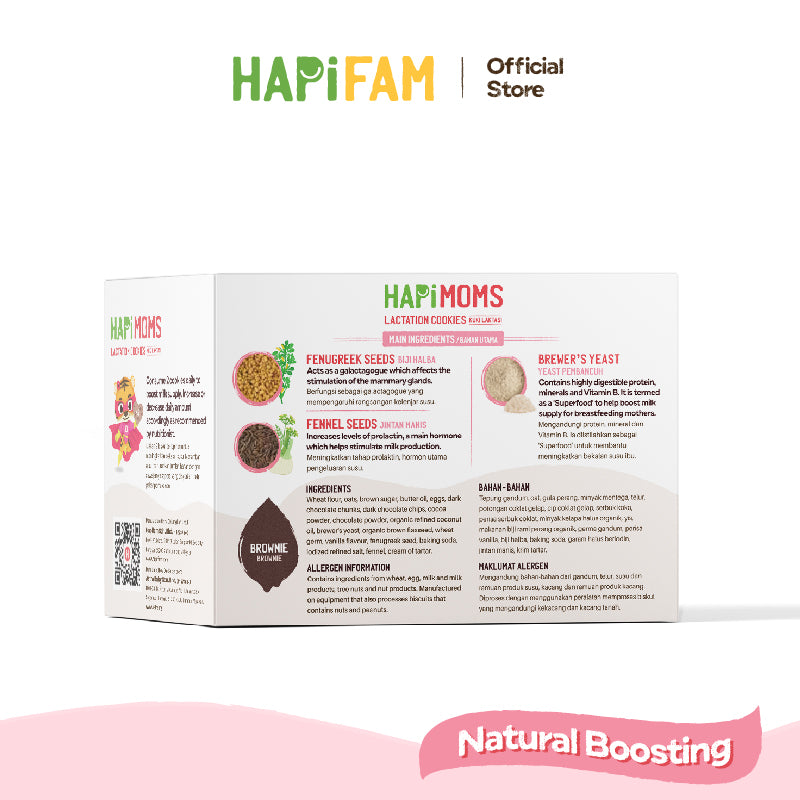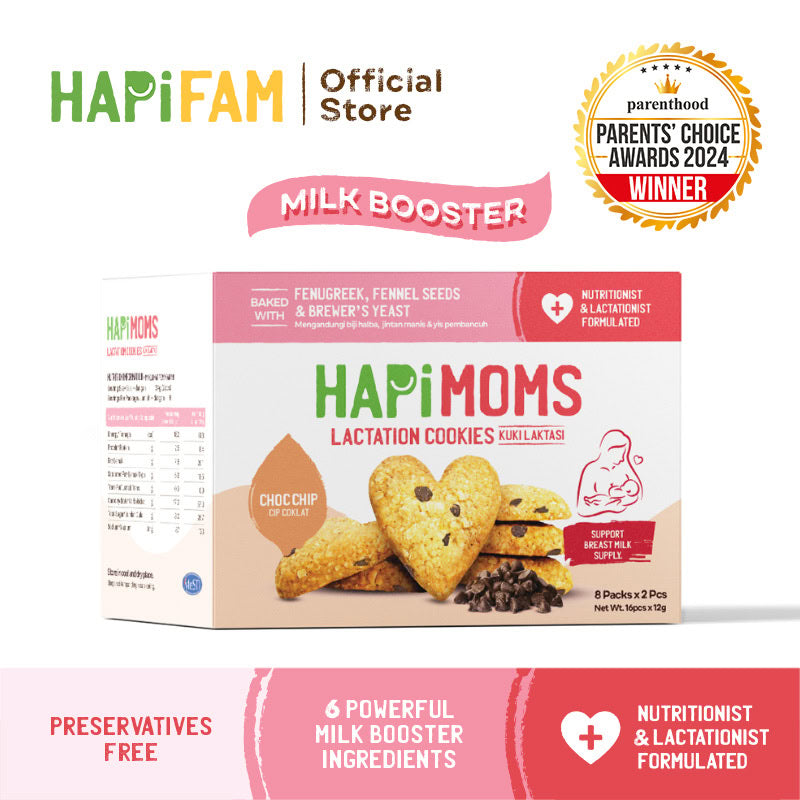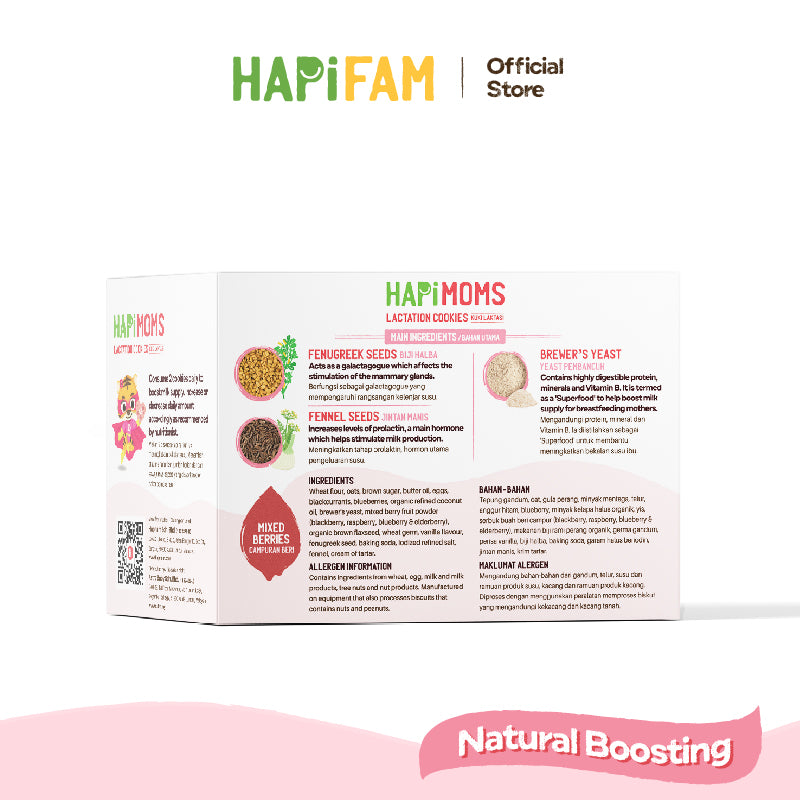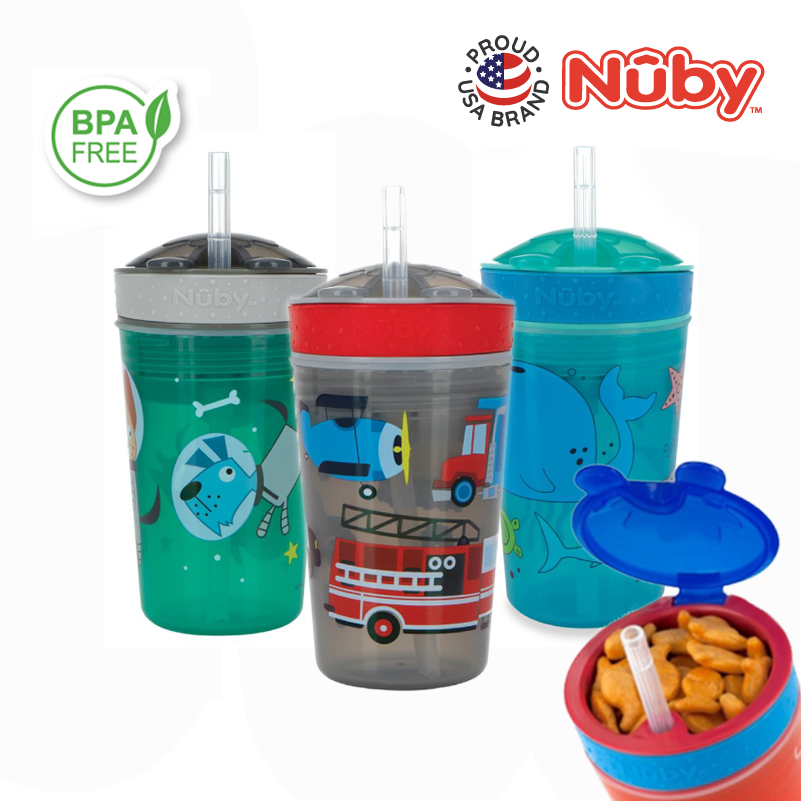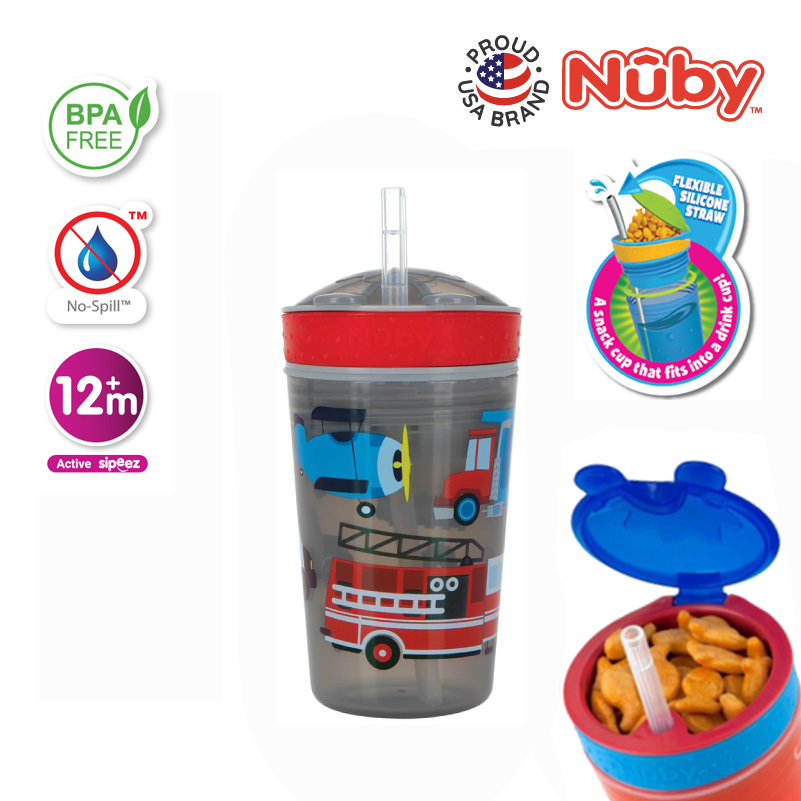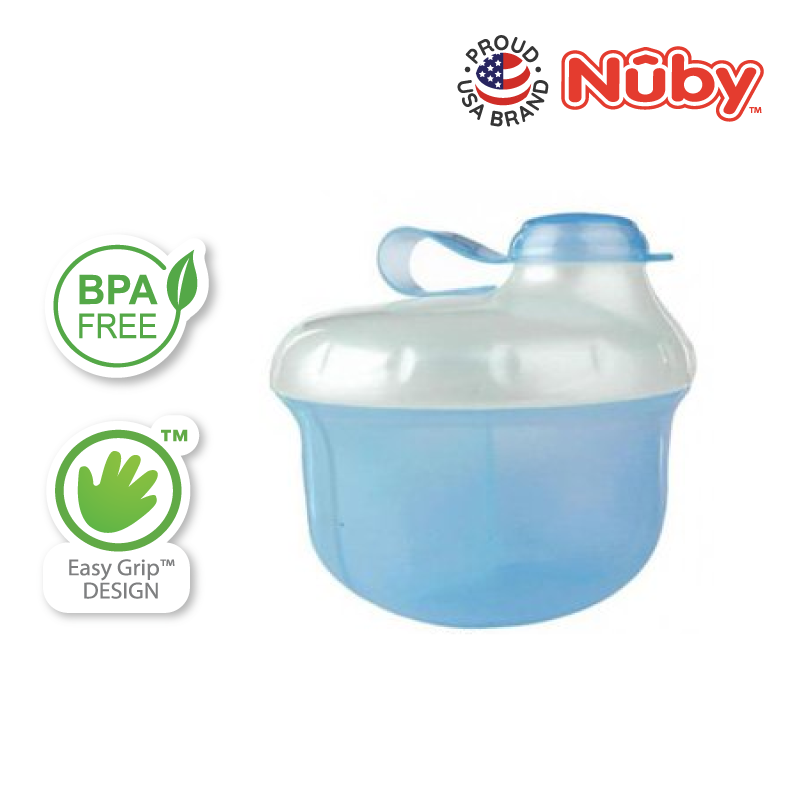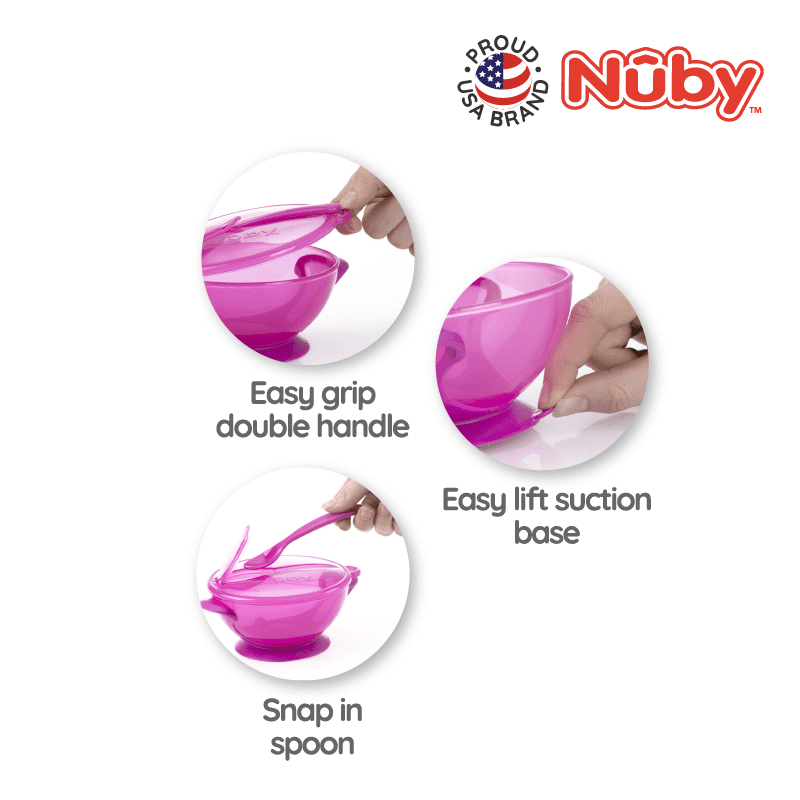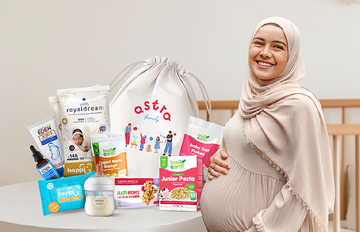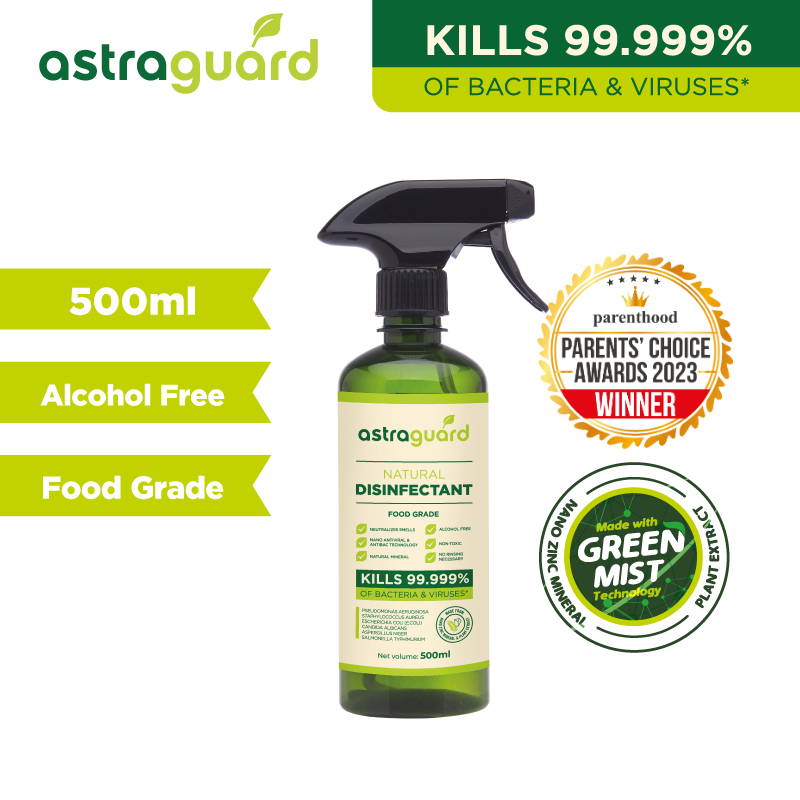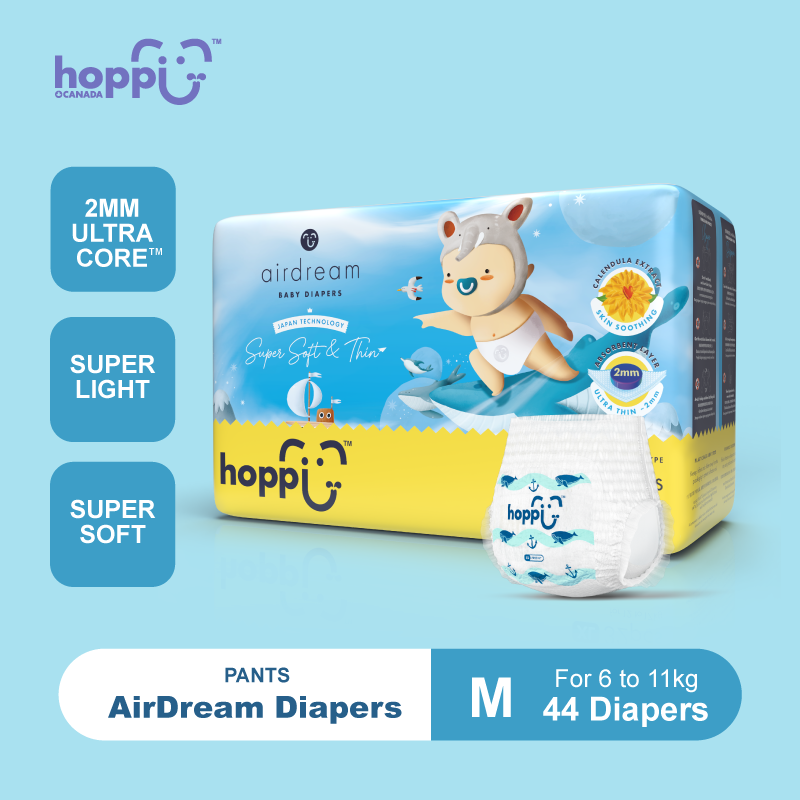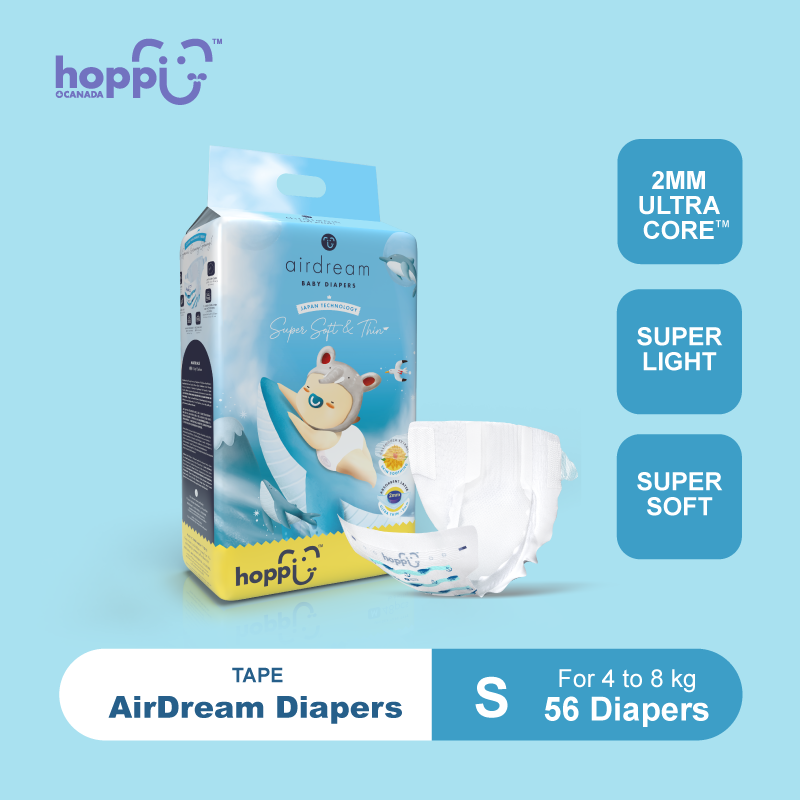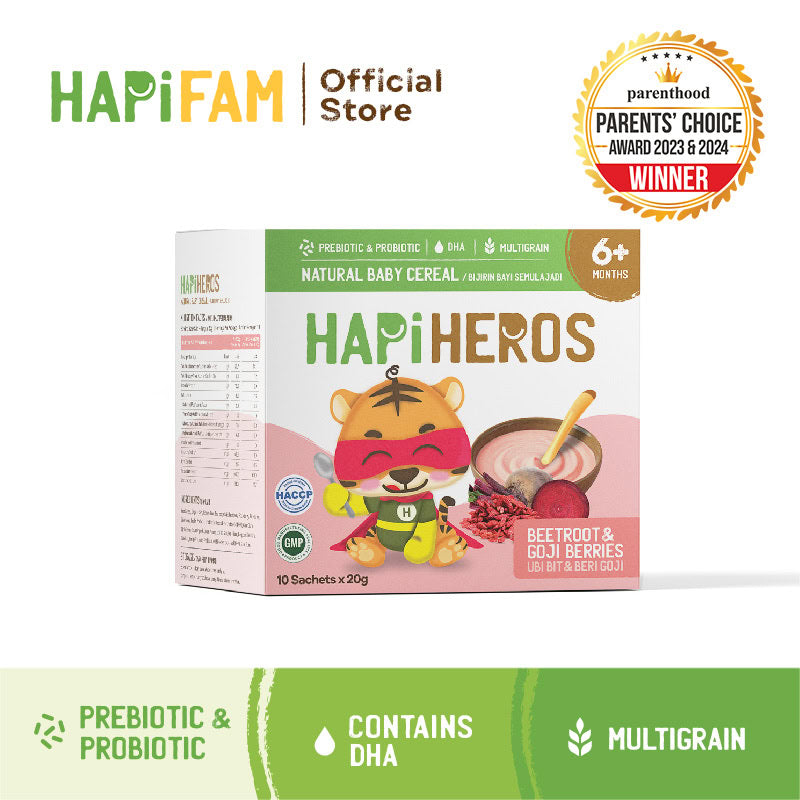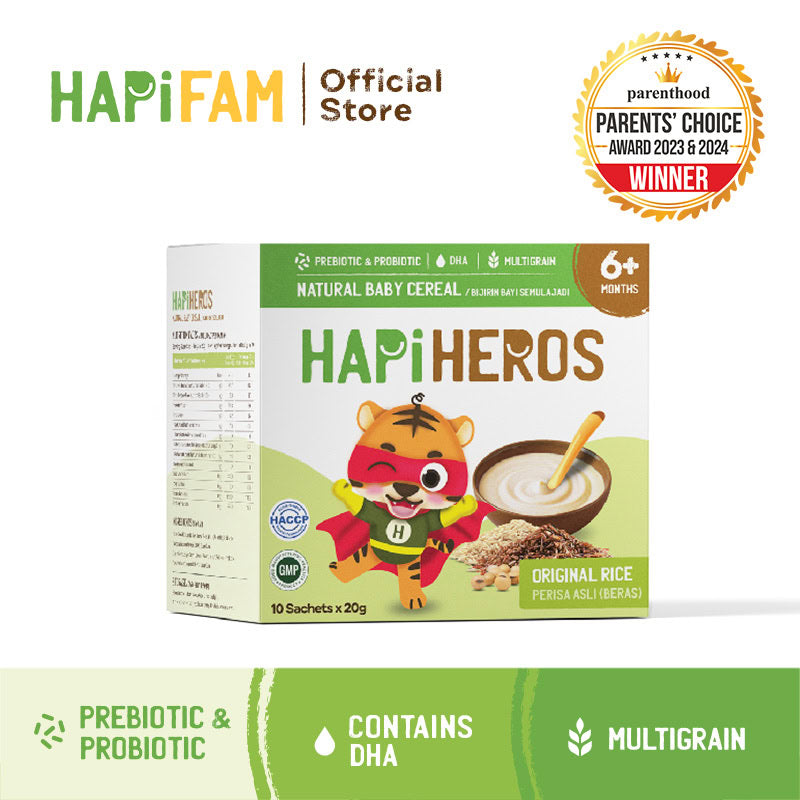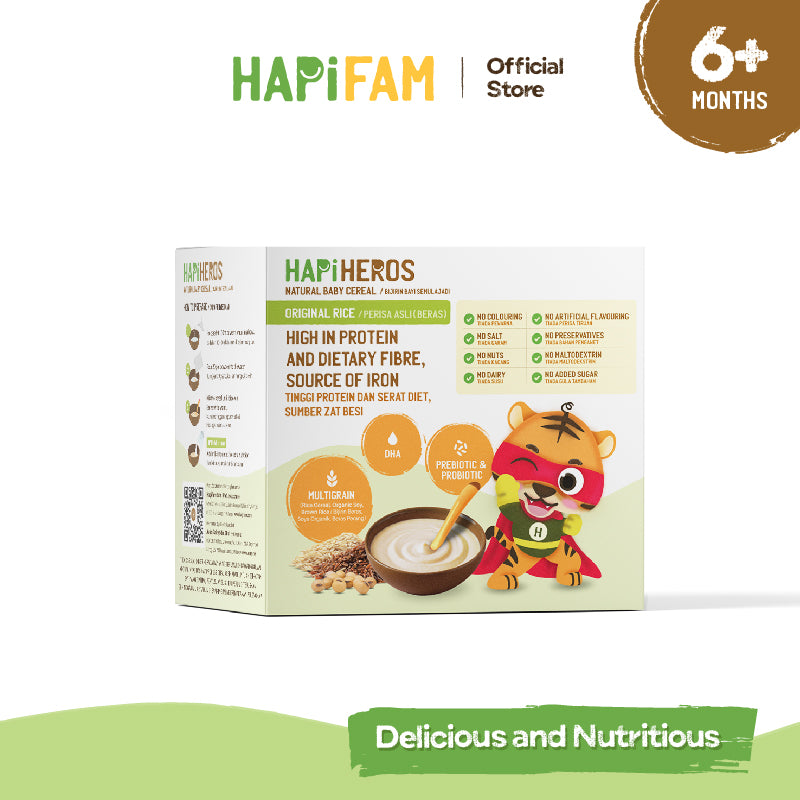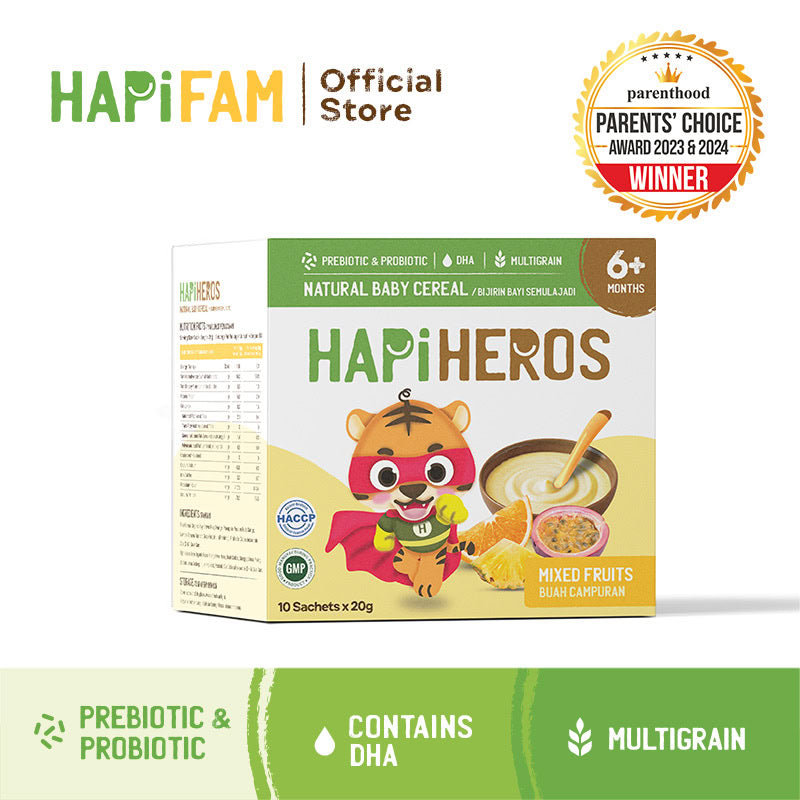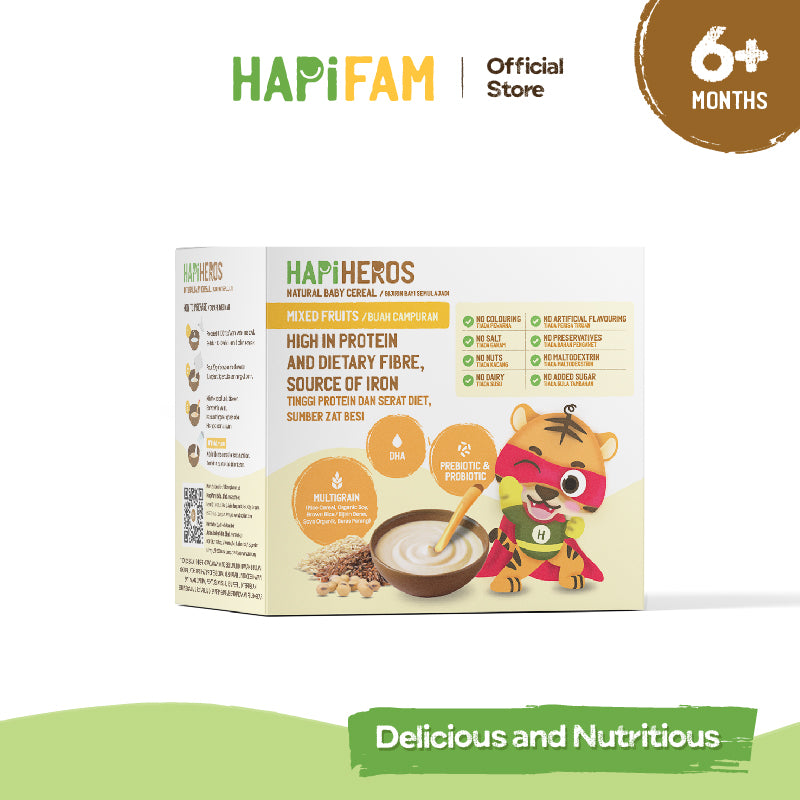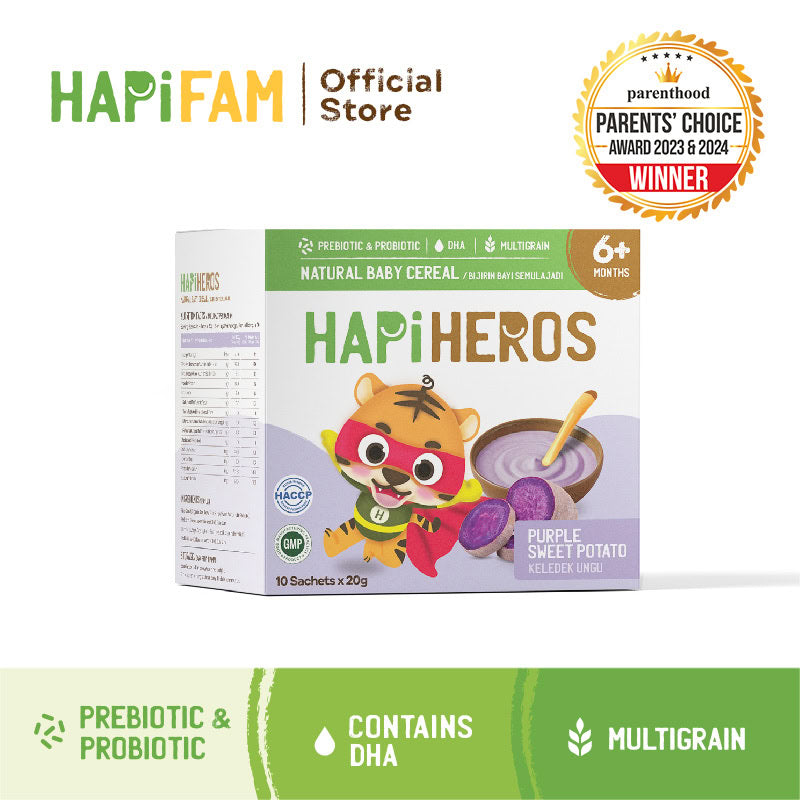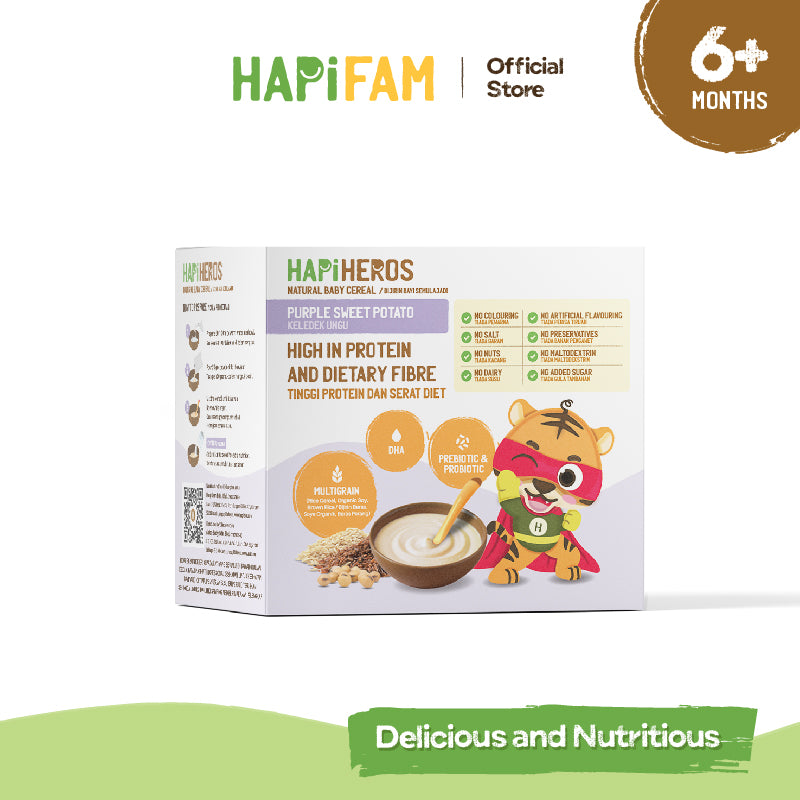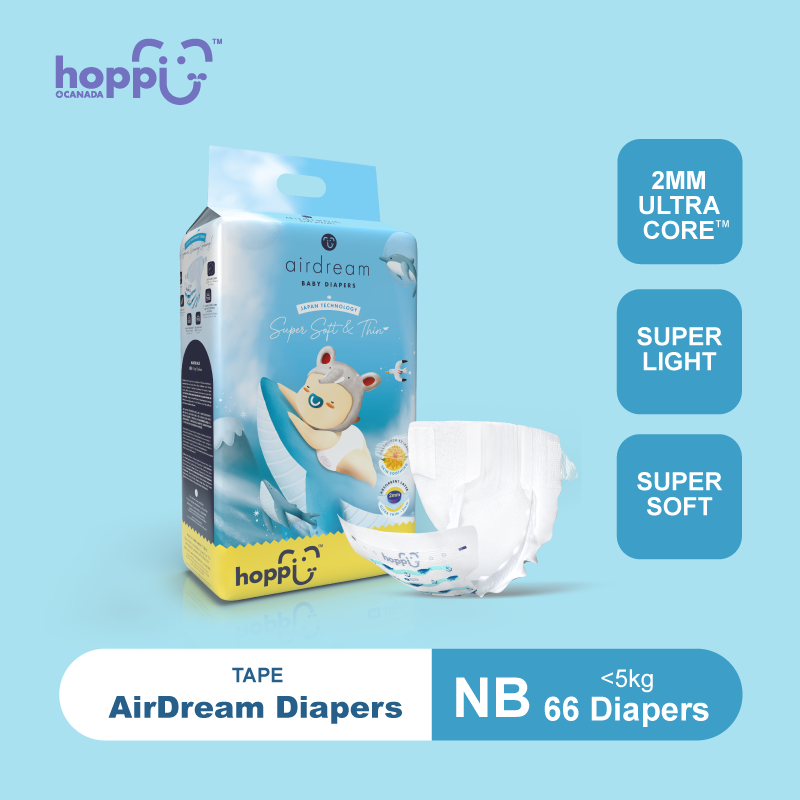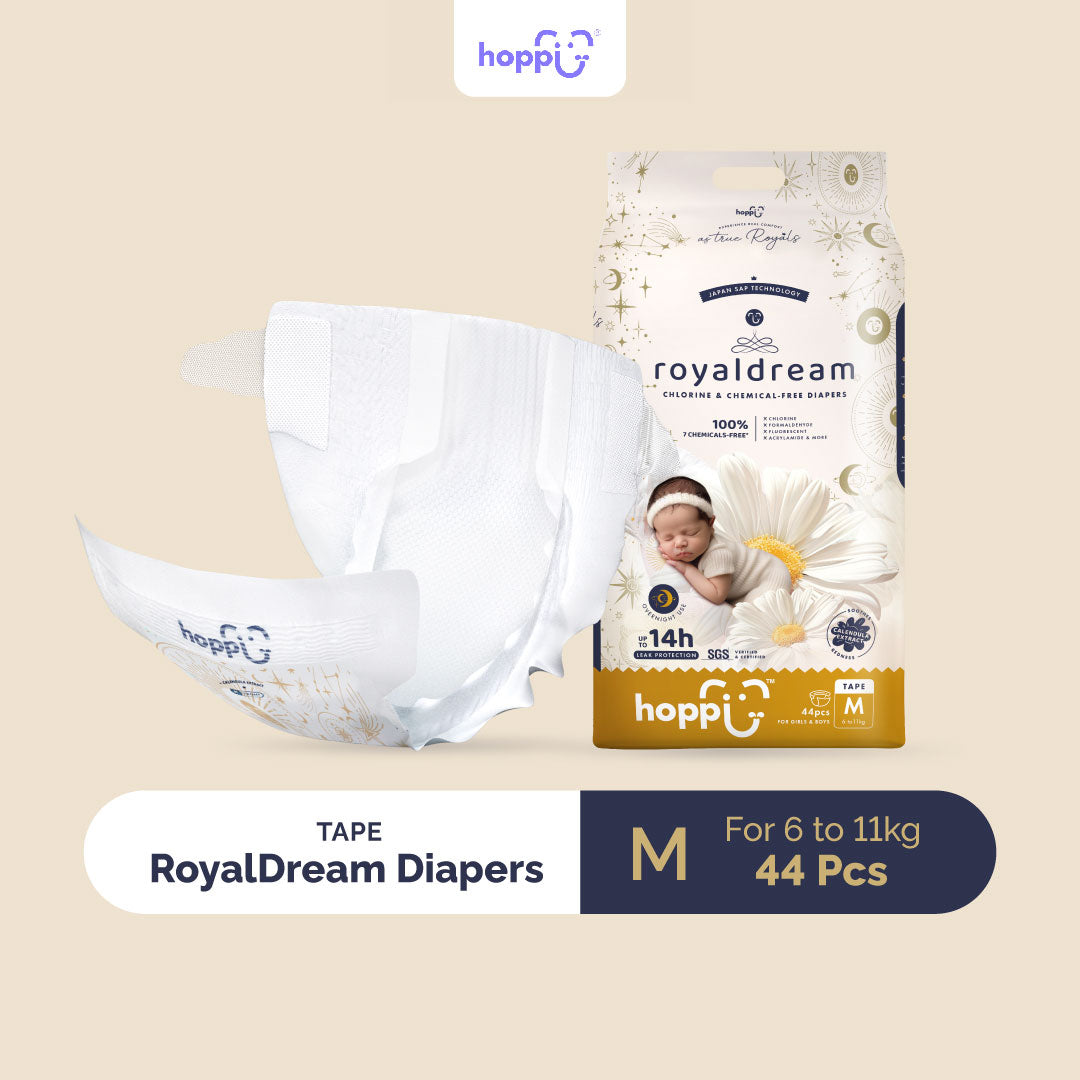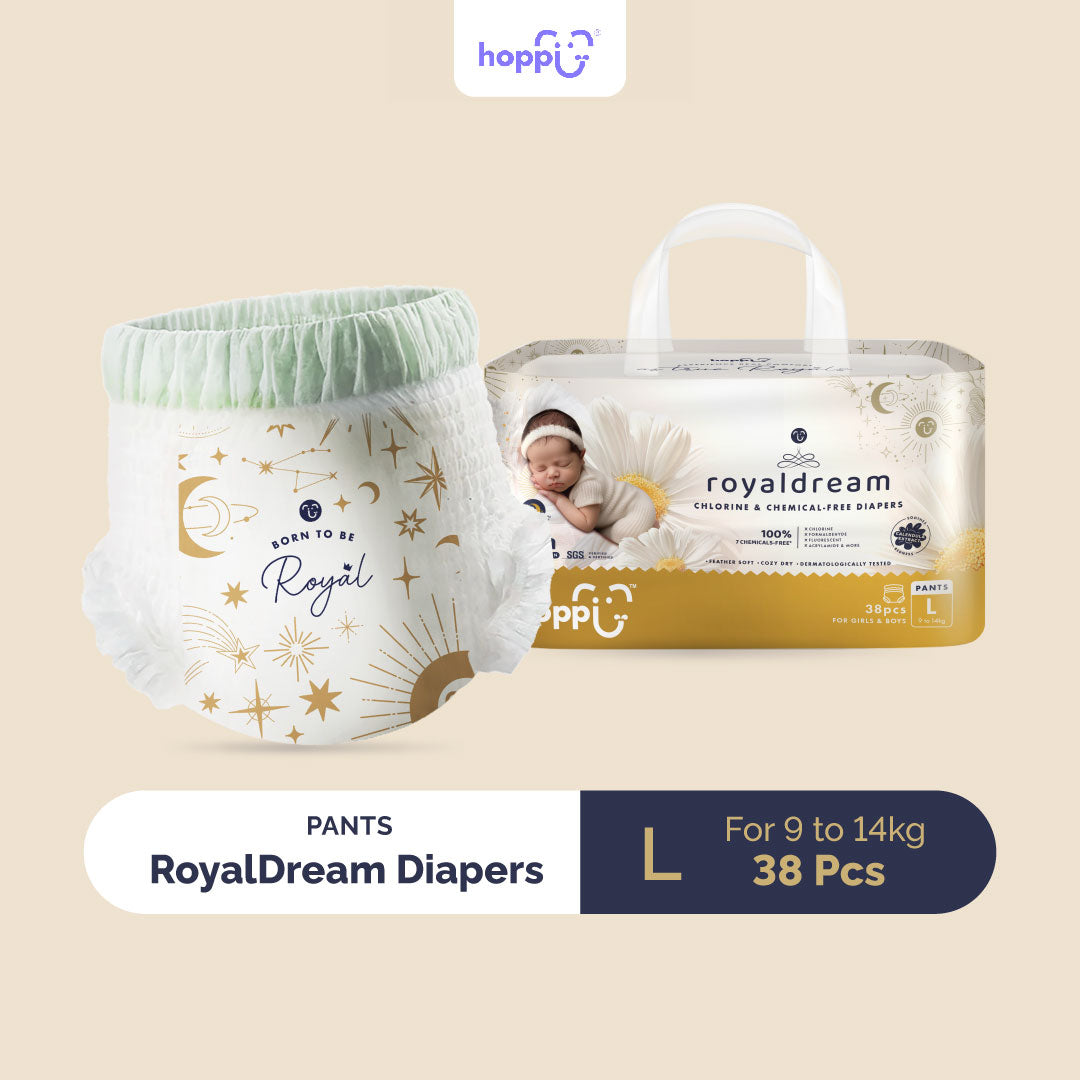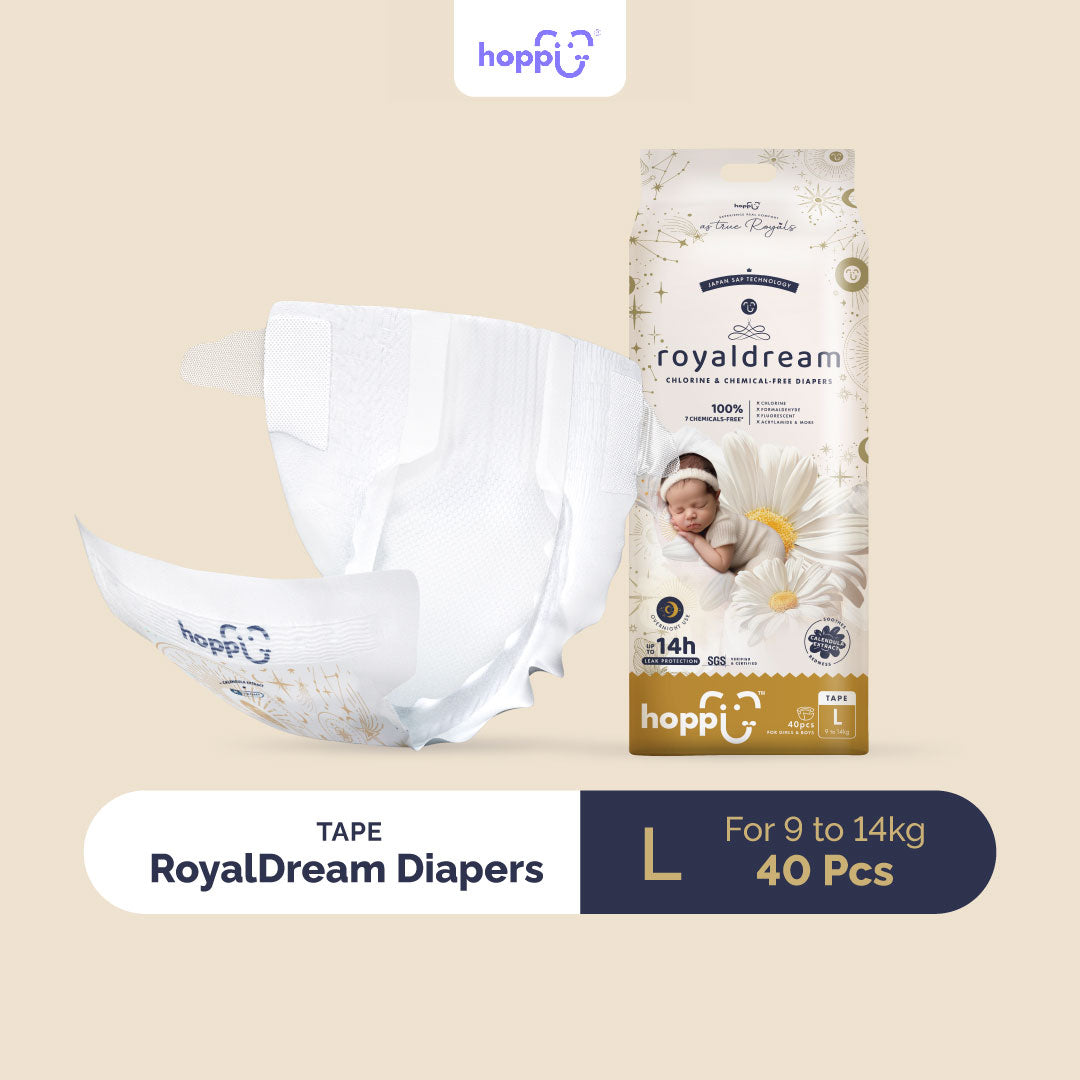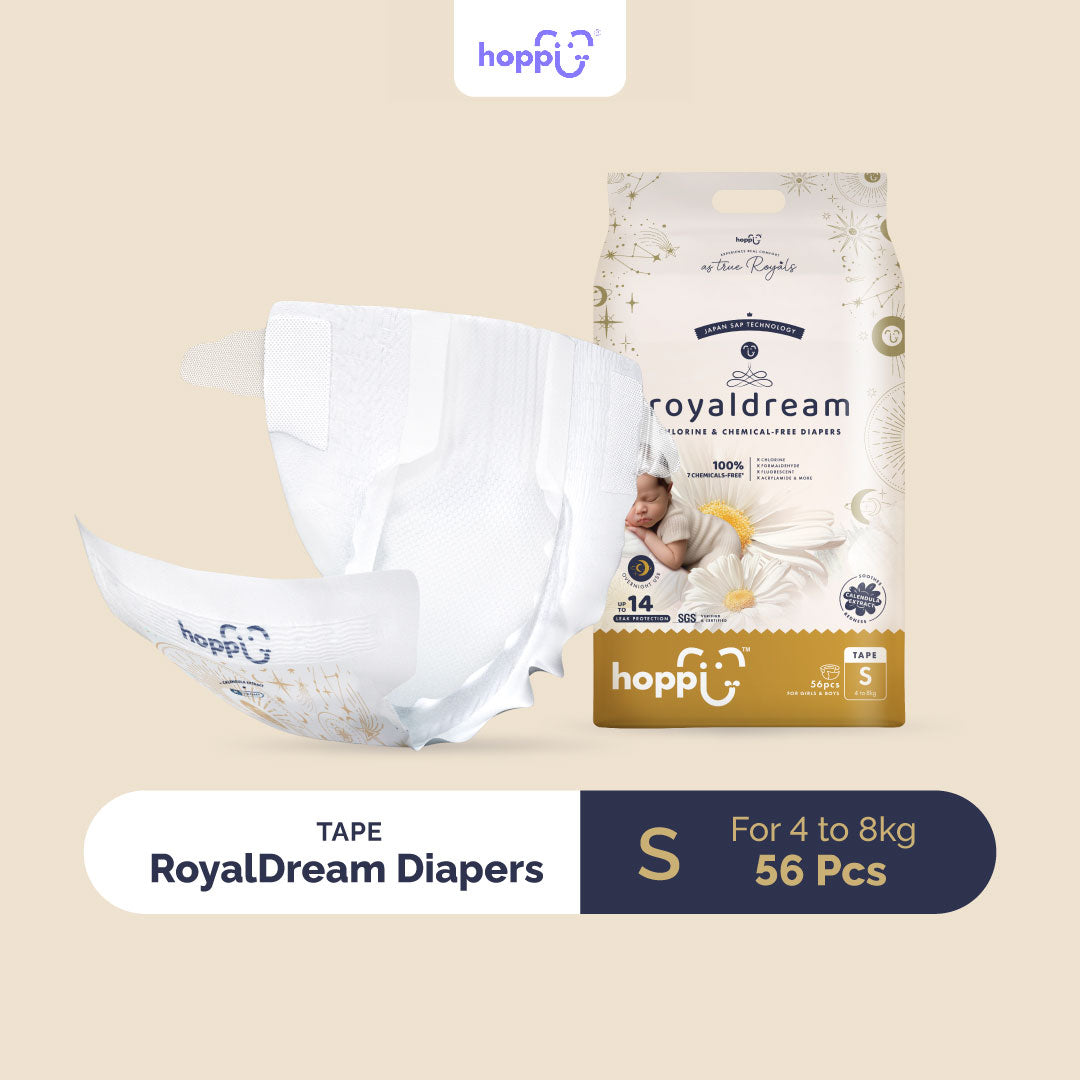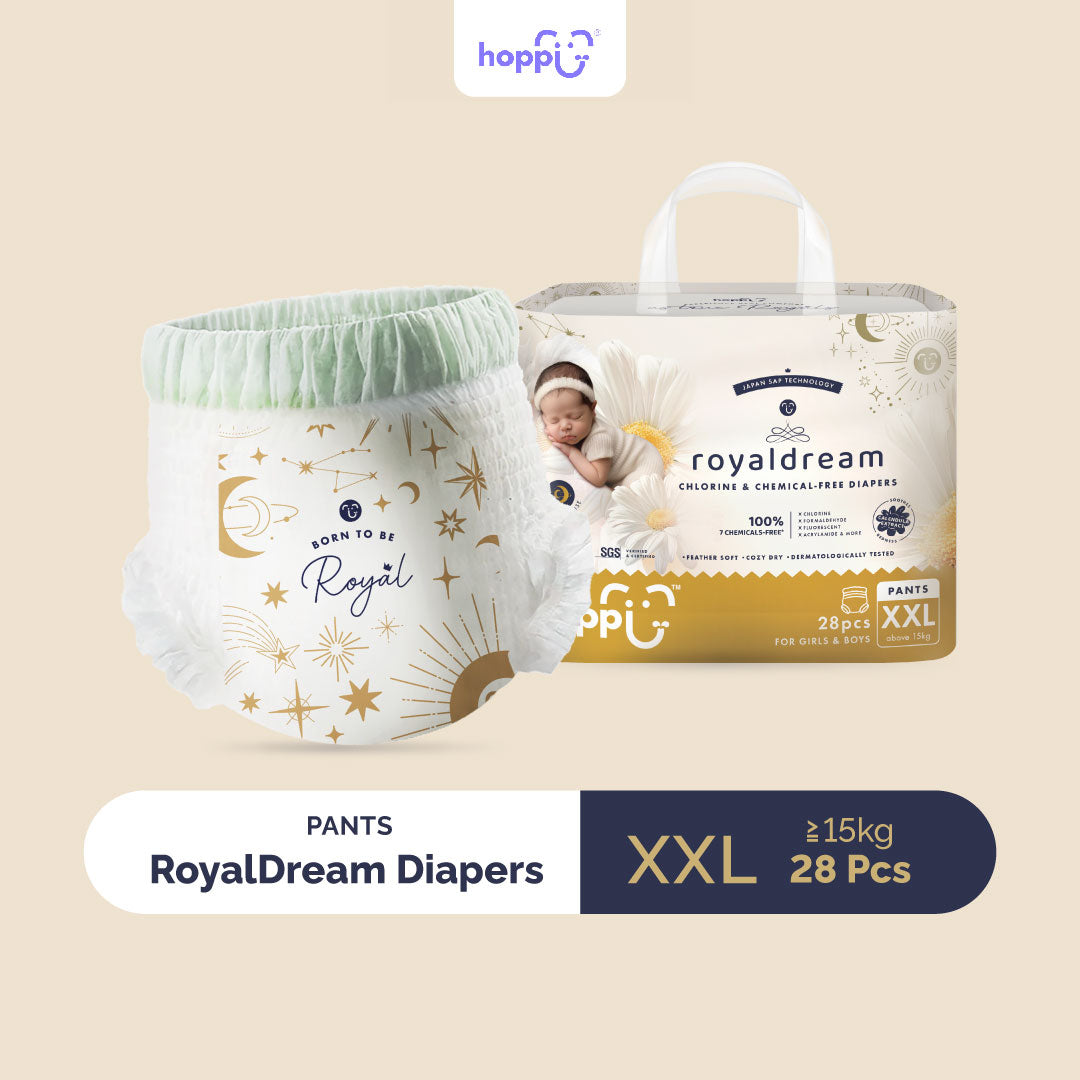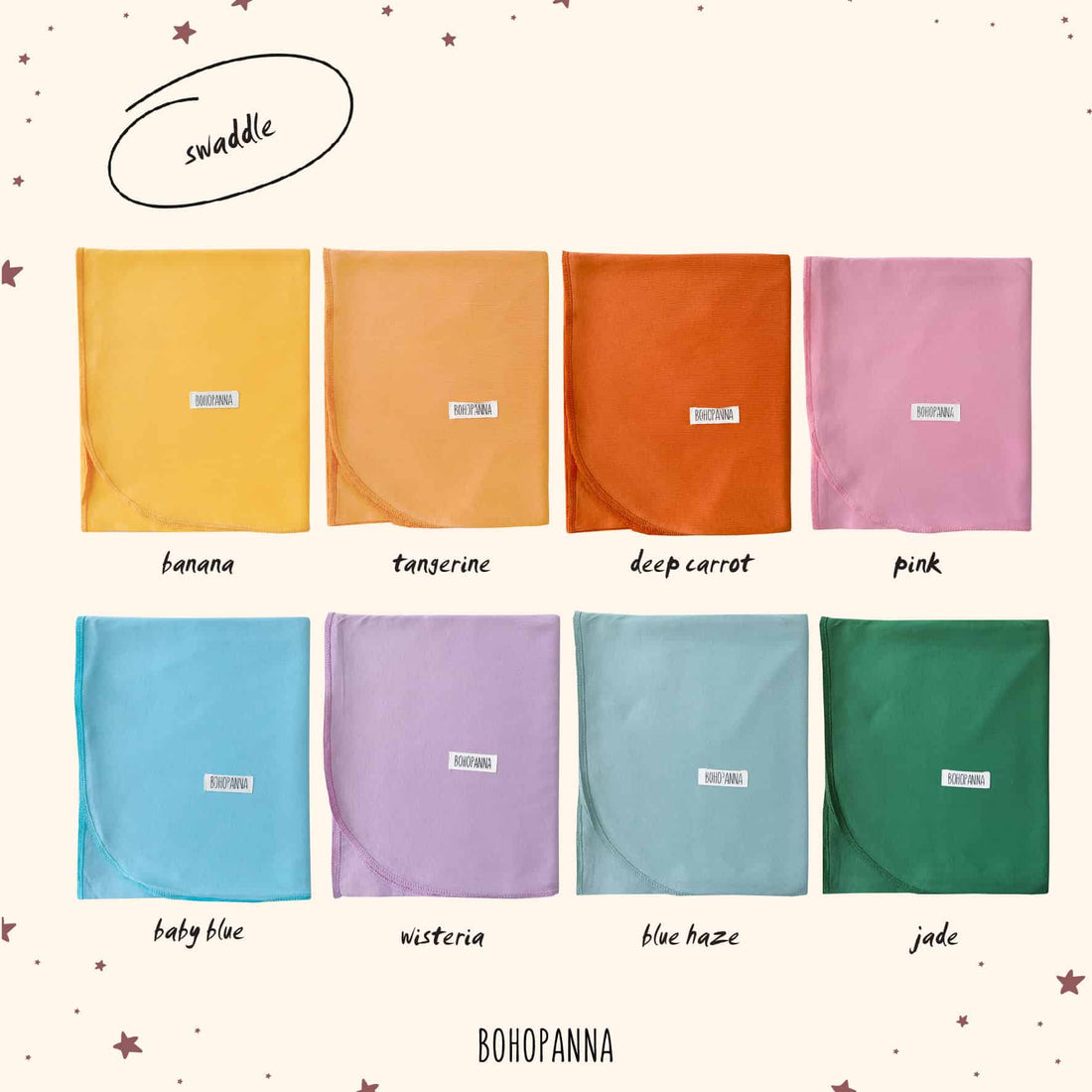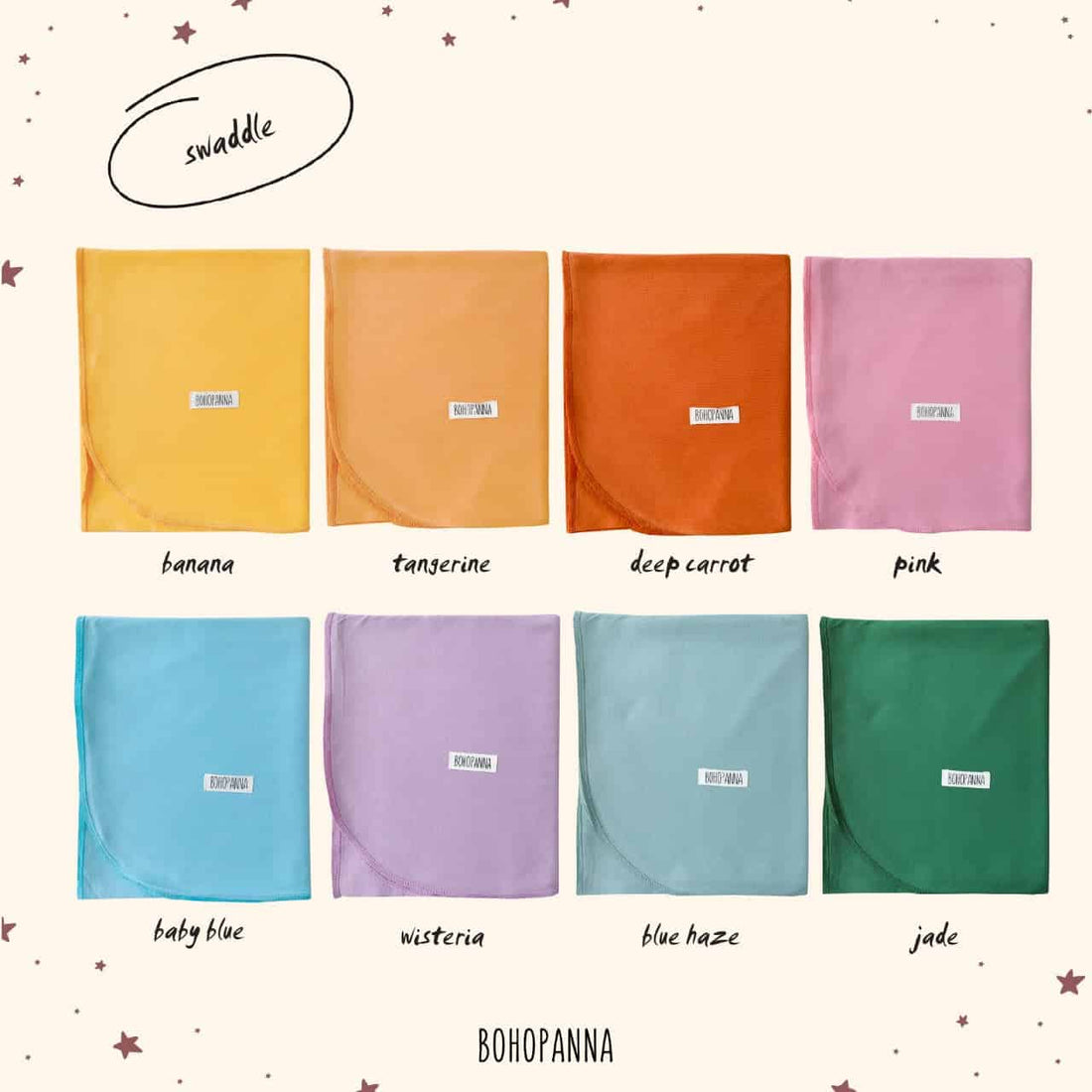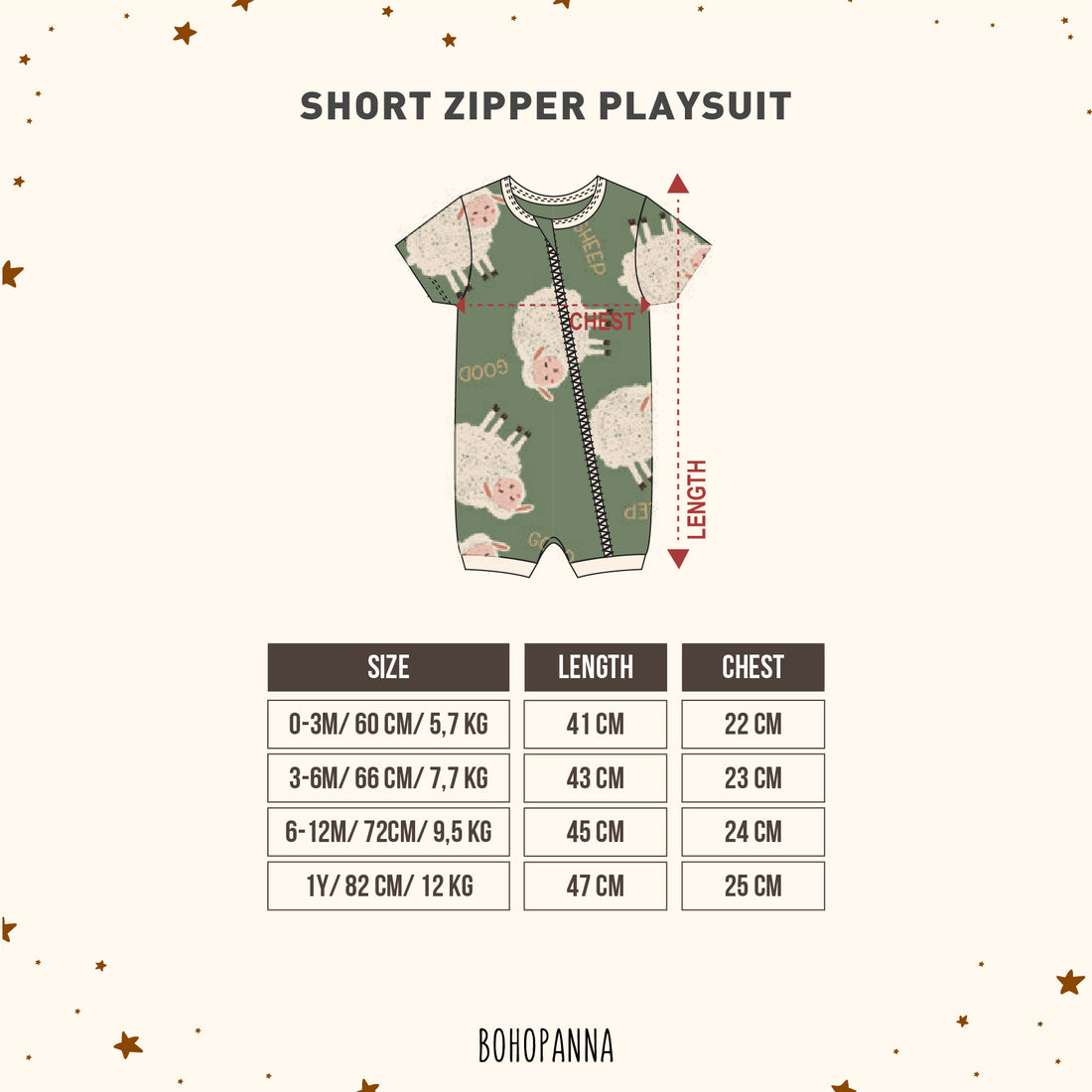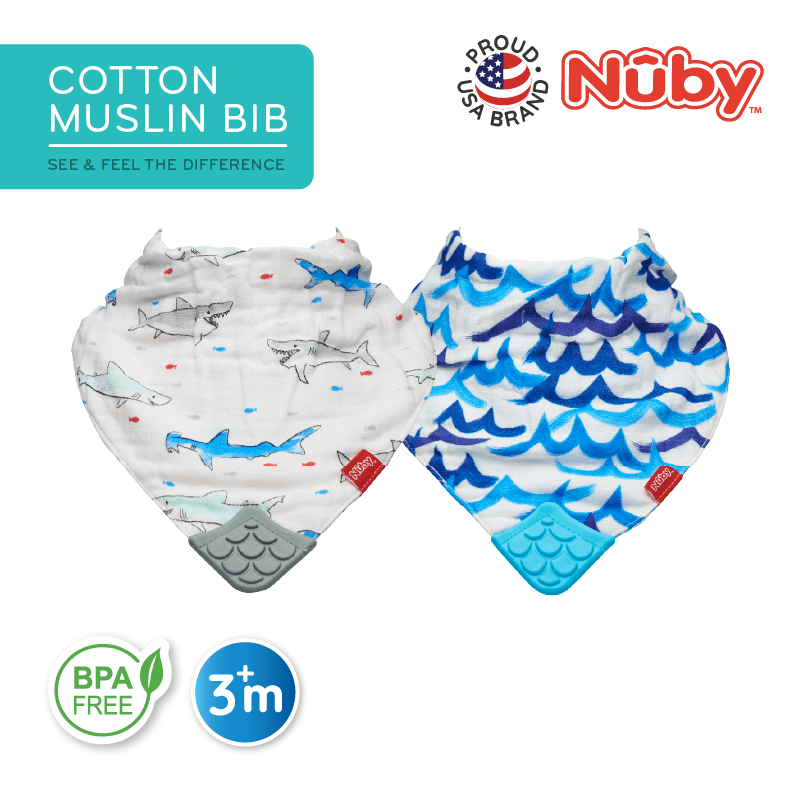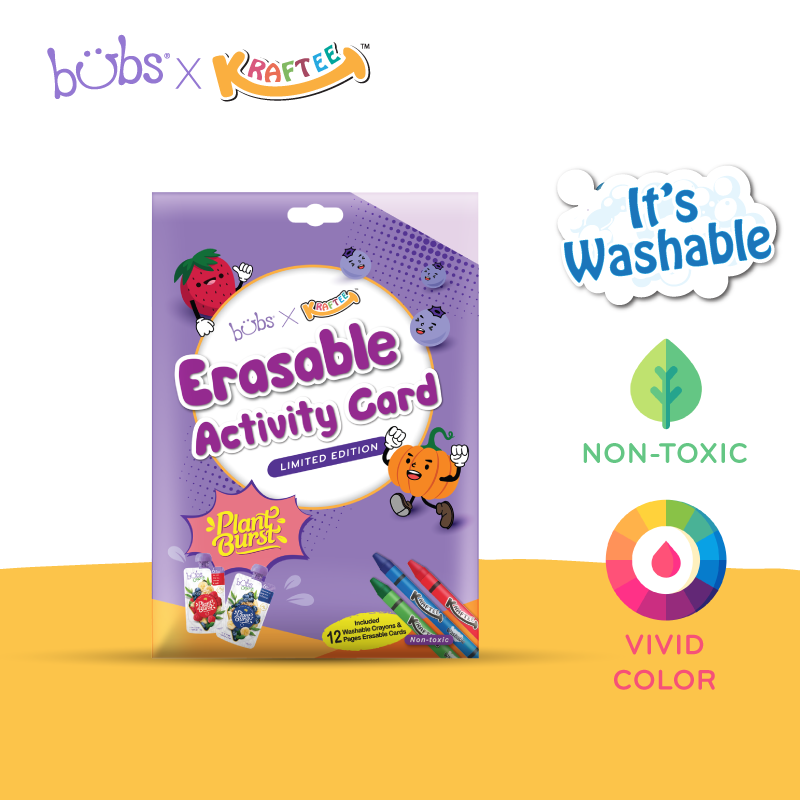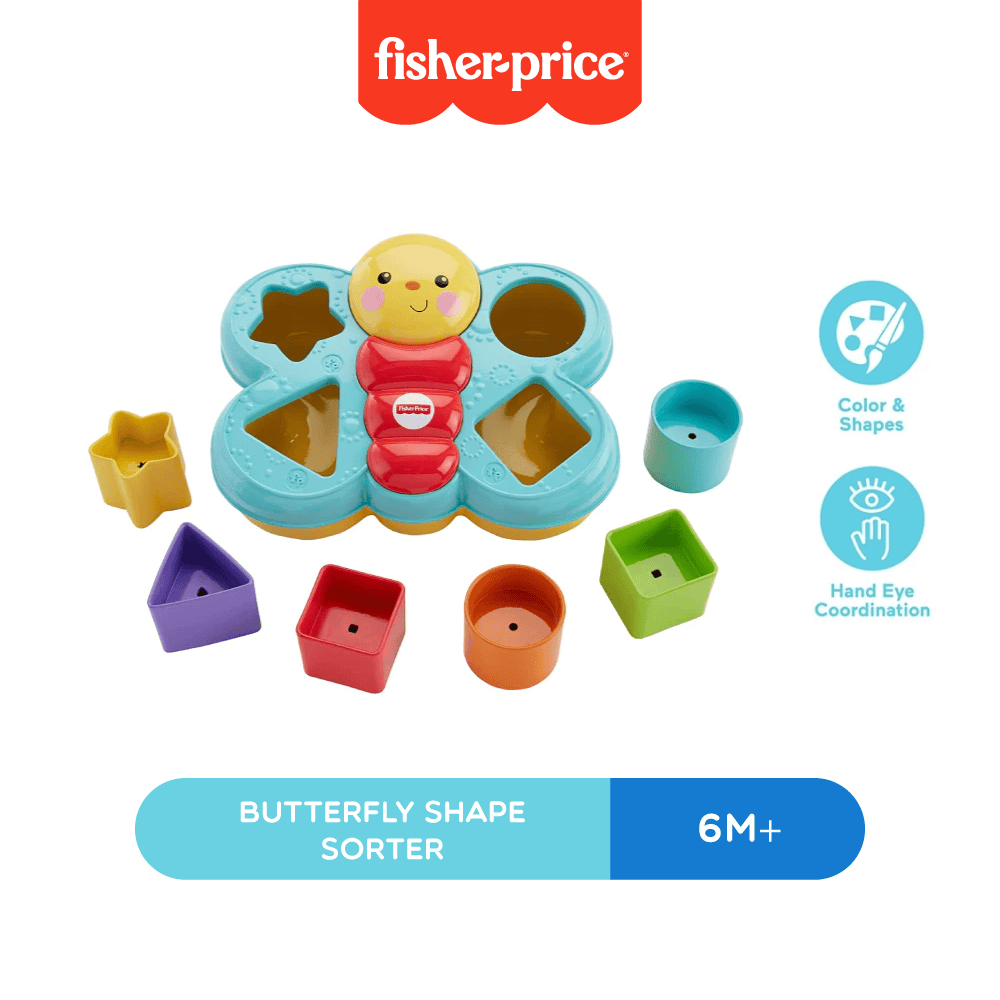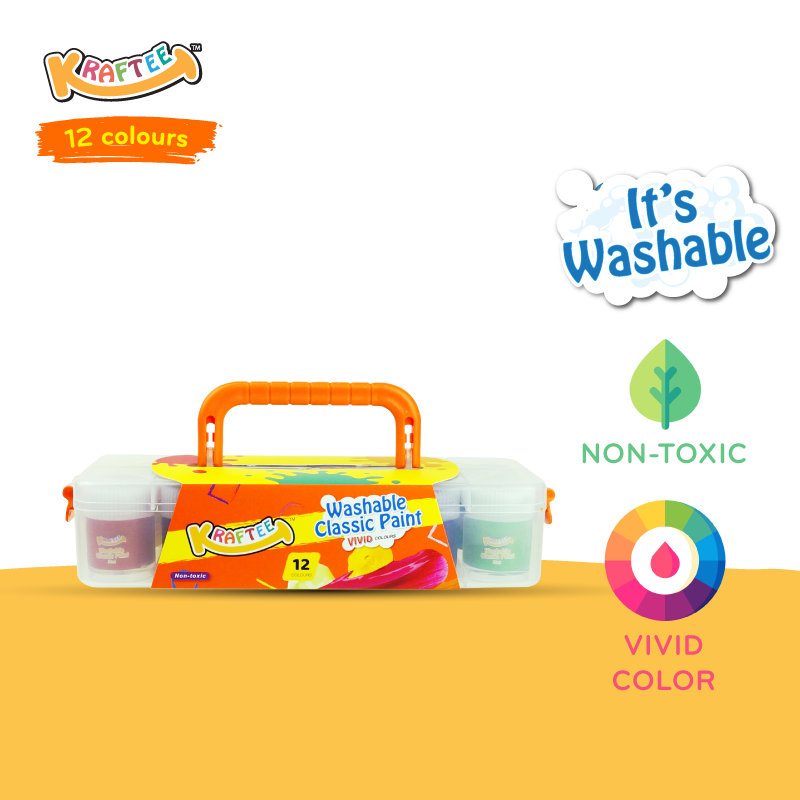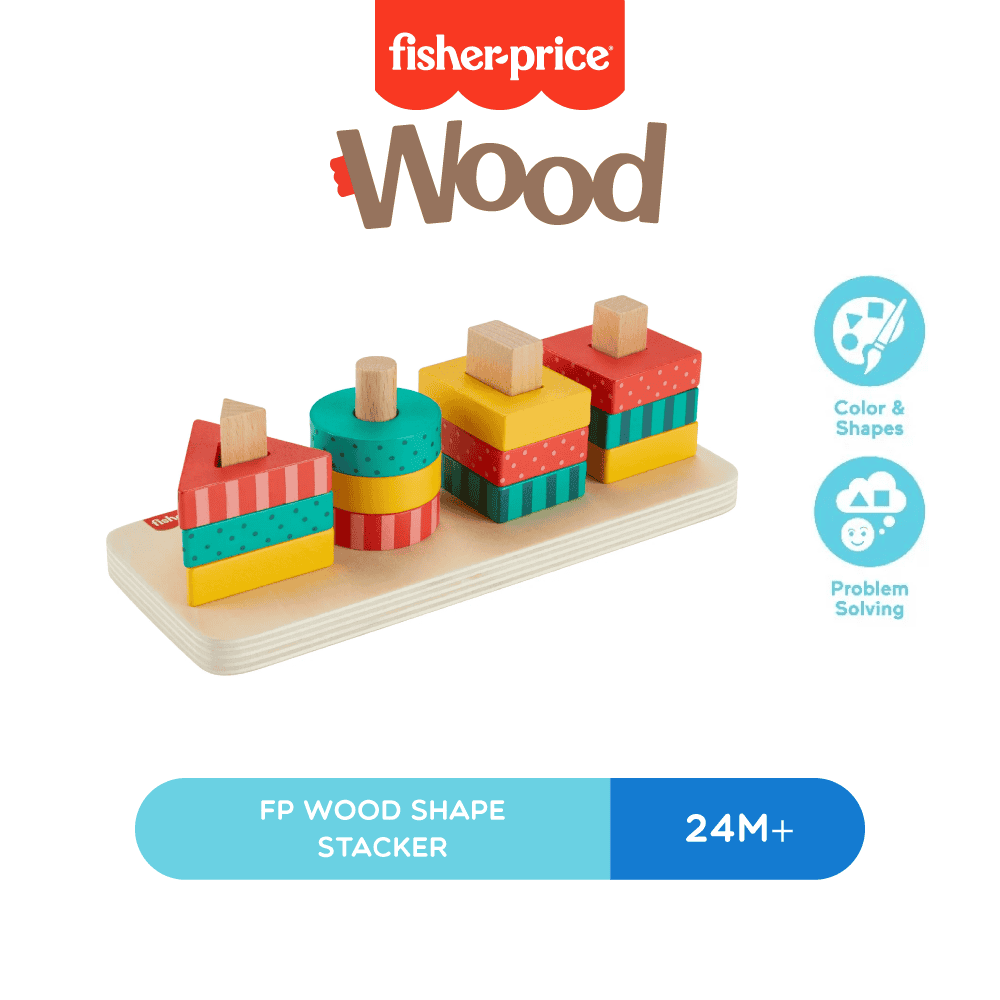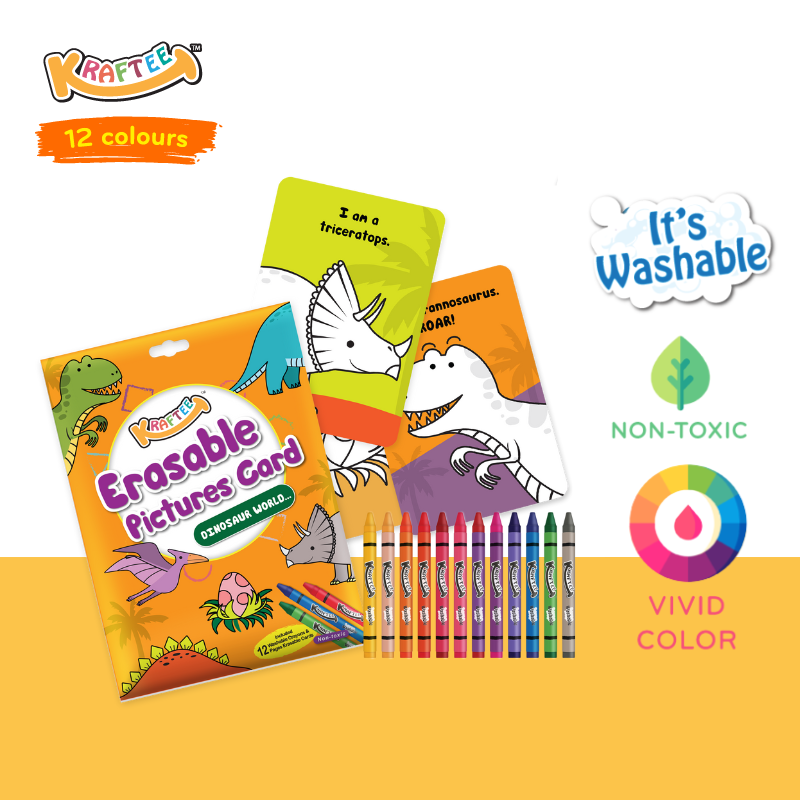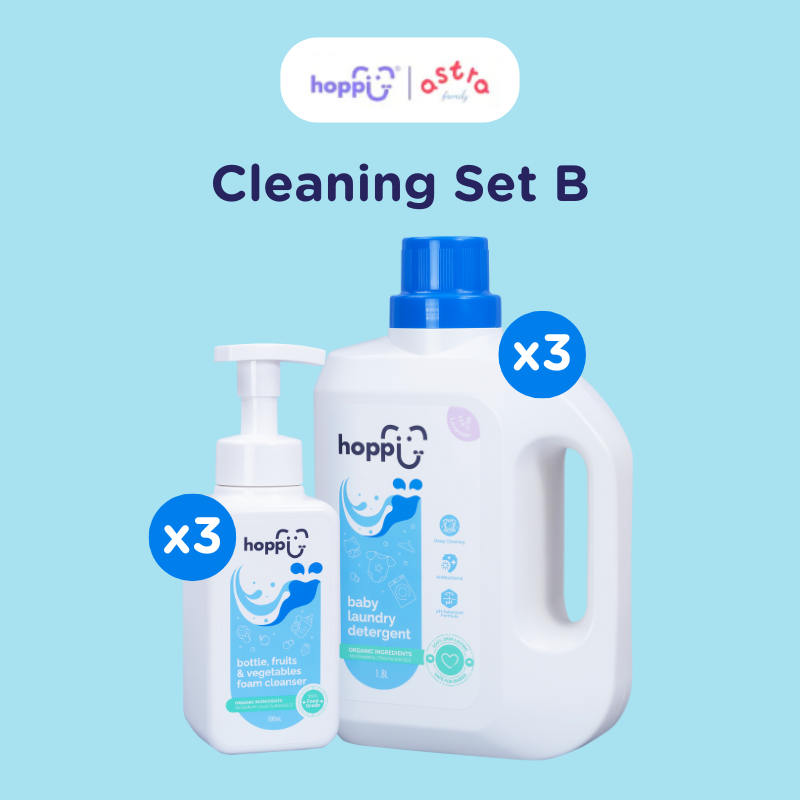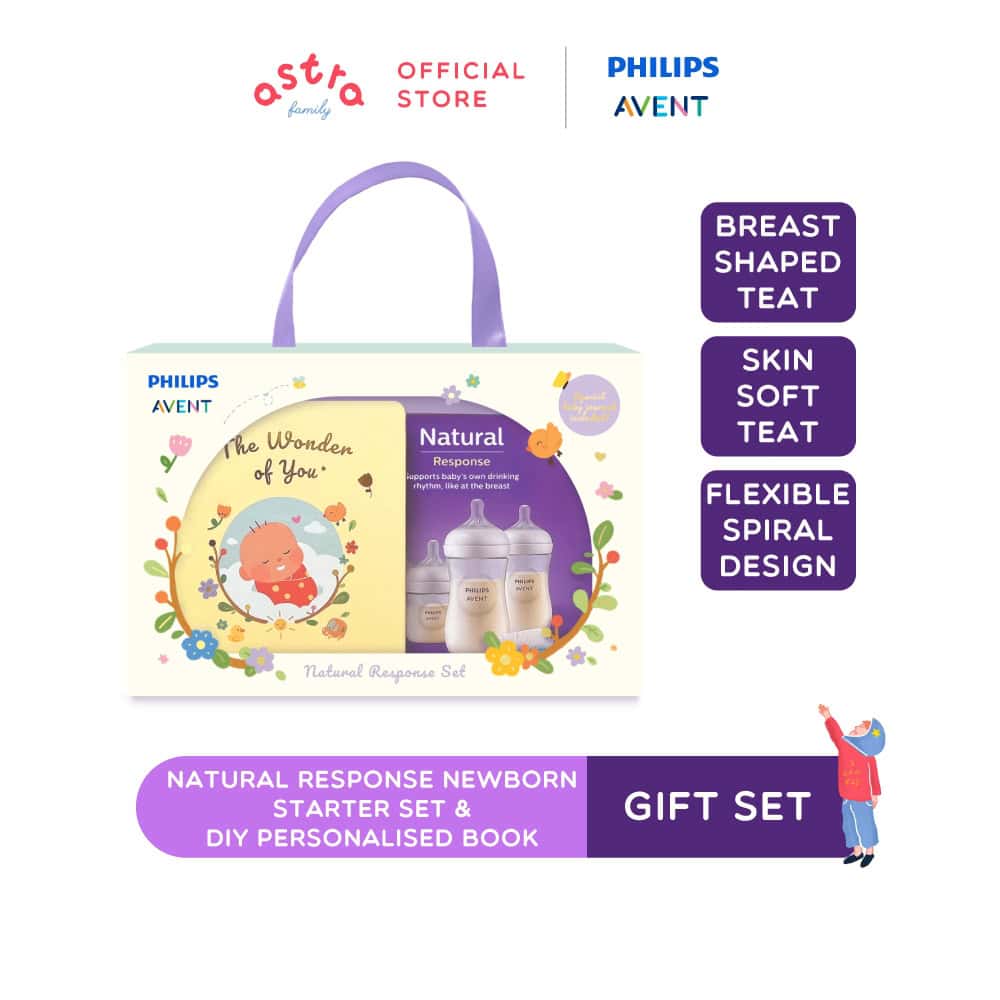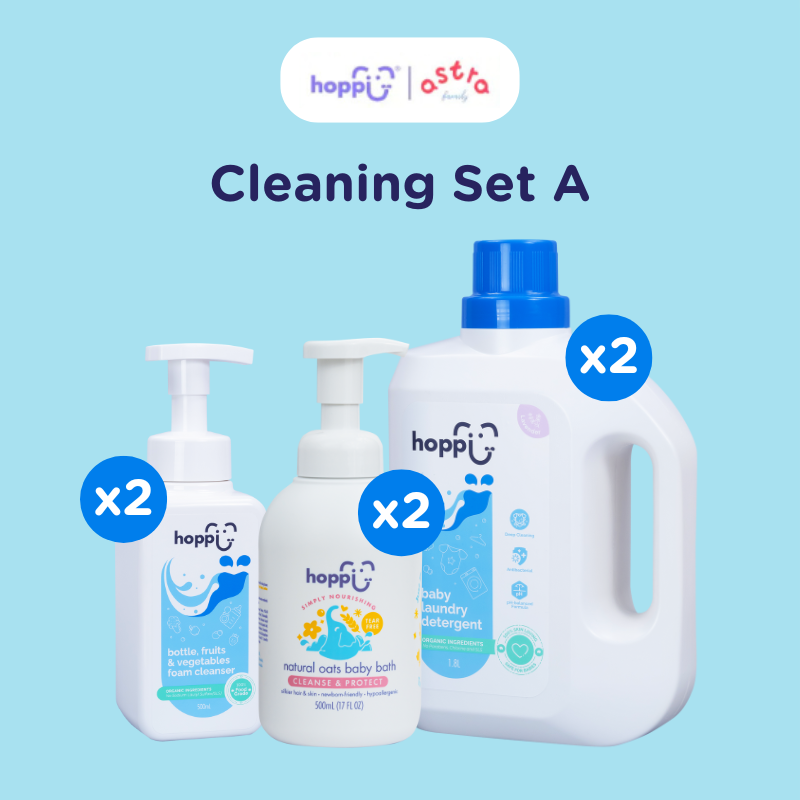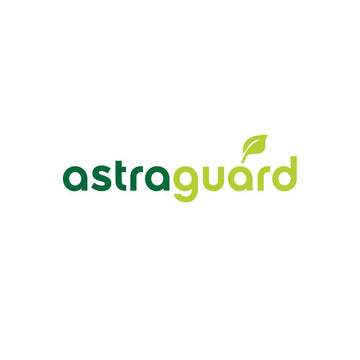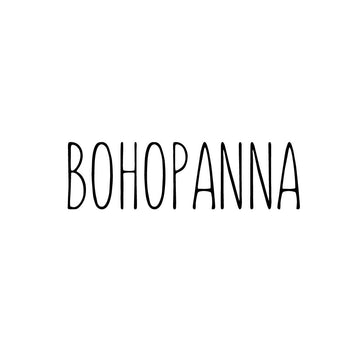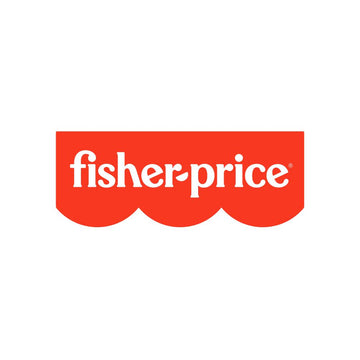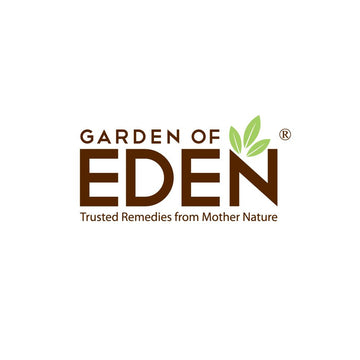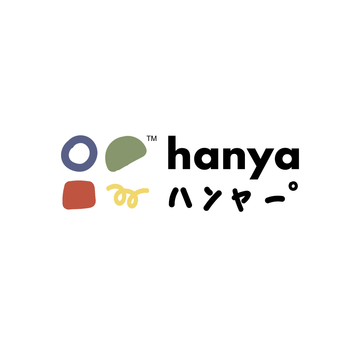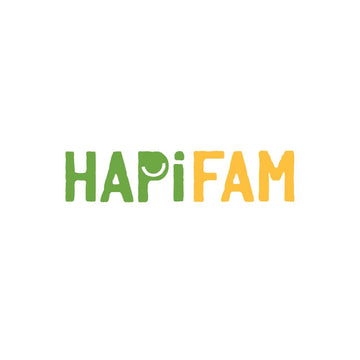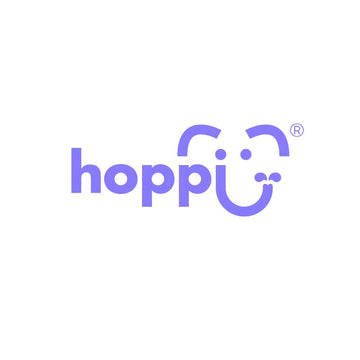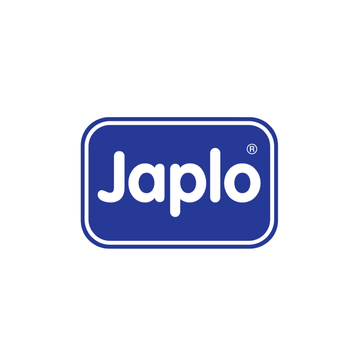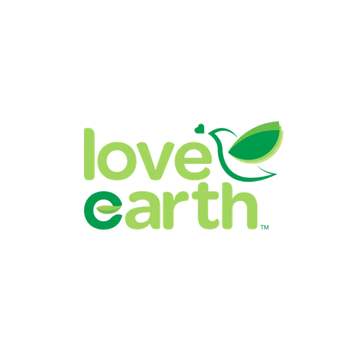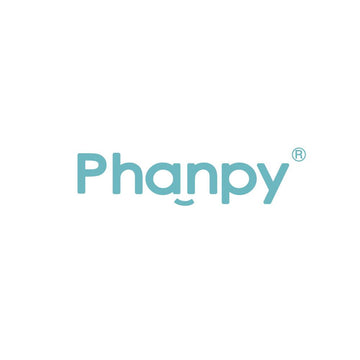Best Deals Today
Pick For You
Hapifam
HAPIHEROS Trial Pack (20g x4)
Regular price
RM9.90
Sale price
RM9.90
Regular price
Unit price
4 delightful flavors in 1 pack (20g x 4 Sachets) Original flavour, Mixed Fruit Flavour,...
Hapifam
HAPIMOMS lactation cookies - Brownie
Regular price
RM47.90
Sale price
RM47.90
Regular price
Unit price
Nutritionists and lactation formulated to support breastmilk supply. Combination of galactagogue ingredients that help to...
Hapifam
HAPIMOMS Lactation Cookies - Choc Chip
Regular price
RM47.90
Sale price
RM47.90
Regular price
Unit price
Nutritionists and lactationist formulated to support breastmilk supply. Combination of galactagogue ingredients that help...
Hapifam
HAPIMOMS Lactation Cookies - Mixed Berries
Regular price
RM47.90
Sale price
RM47.90
Regular price
Unit price
Nutritionists and lactationist formulated to support breastmilk supply. Combination of galactagogue ingredients that help...
Nuby
Nuby Snack N Sip 1pk 270ml Printed Cup with Thin Straw and Snack Cup
Regular price
From RM8.90
Sale price
From RM8.90
Regular price
RM29.00
Unit price
Snack & Drink Cup - 2 in 1, Eat and drink from the same container...
Hoppi
Hoppi 80 Sheets 3-In-1 Bundle Pack Baby Wet Wipes
Regular price
RM18.50
Sale price
RM18.50
Regular price
Unit price
Hoppi Baby Wet Wipes, a specially designed 99% water wipes for newborns. SOFT, THICK &...
Hoppi
Hoppi Air Dream Tape Diapers M - 48 pcs
Regular price
RM36.88
Sale price
RM36.88
Regular price
RM45.90
Unit price
1. Ultra slim
2. Super Soft
3. Highly absorbent
4. Chlorine Free
5. PH Balanced
Astra Guard
Astra Guard Natural Disinfectant 500ml
Regular price
RM40.00
Sale price
RM40.00
Regular price
Unit price
Astra Guard Natural Disinfectant 500ml Astra Guard provides an instant 99.999% kill rate of bacteria...
Hoppi
Hoppi Air Dream Pants Diapers L - 38 pcs
Regular price
RM36.88
Sale price
RM36.88
Regular price
RM45.90
Unit price
1. Ultra slim
2. Super Soft
3. Highly absorbent
4. Chlorine Free
5. PH Balanced
Hoppi
Hoppi Air Dream Pants Diapers M - 44 pcs
Regular price
RM36.88
Sale price
RM36.88
Regular price
RM45.90
Unit price
1. Ultra slim
2. Super Soft
3. Highly absorbent
4. Chlorine Free
5. PH Balanced
Hoppi
Hoppi Air Dream Tape Diapers S - 56 pcs
Regular price
RM36.88
Sale price
RM36.88
Regular price
RM45.90
Unit price
1. Ultra slim
2. Super Soft
3. Highly absorbent
4. Chlorine Free
5. PH Balanced
Hoppi
Hoppi Air Dream Pants Diapers XL - 32 pcs
Regular price
RM36.88
Sale price
RM36.88
Regular price
RM45.90
Unit price
1. Ultra slim
2. Super Soft
3. Highly absorbent
4. Chlorine Free
5. PH Balanced
Hoppi
Hoppi 20 Sheets 5-In-1 Bundle Pack Antibacterial Wet Wipes
Regular price
RM13.90
Sale price
RM13.90
Regular price
Unit price
Hoppi Antibacterial Wipes, swiftly cleanses & protect surfaces against germs. 50gsm Thick, Pearl Pattern Design....
Hapifam
HAPIHEROS Baby Cereal - Beetroot, Berries & Goji (20gx10)
Regular price
RM16.90
Sale price
RM16.90
Regular price
RM19.90
Unit price
No Colouring No Artificial Flavouring No Nuts No Dairy No Maltodextrin No added sugar...
Hoppi
Hoppi Air Dream Tape Diapers L - 40 pcs
Regular price
RM36.88
Sale price
RM36.88
Regular price
RM45.90
Unit price
1. Ultra slim
2. Super Soft
3. Highly absorbent
4. Chlorine Free
5. PH Balanced
Hapifam
HAPIHEROS Baby Cereal - Original 200g (20g x 10)
Regular price
RM16.90
Sale price
RM16.90
Regular price
RM19.90
Unit price
No Colouring No Artificial Flavouring No Nuts No Dairy No Maltodextrin No added sugar...
Hapifam
HAPIHEROS Baby Cereal - Mixed Fruit 200g (20g x 10)
Regular price
RM16.90
Sale price
RM16.90
Regular price
RM19.90
Unit price
No Colouring No Artificial Flavouring No Nuts No Dairy No Maltodextrin No added sugar...
Hapifam
HAPIHEROS Baby Cereal - Purple Sweet Potato (20g x 10)
Regular price
RM16.90
Sale price
RM16.90
Regular price
RM19.90
Unit price
Hoppi
Hoppi Air Dream Tape Diapers M - 48 pcs
Regular price
RM36.88
Sale price
RM36.88
Regular price
RM45.90
Unit price
1. Ultra slim
2. Super Soft
3. Highly absorbent
4. Chlorine Free
5. PH Balanced
Hoppi
Hoppi Air Dream Pants Diapers L - 38 pcs
Regular price
RM36.88
Sale price
RM36.88
Regular price
RM45.90
Unit price
1. Ultra slim
2. Super Soft
3. Highly absorbent
4. Chlorine Free
5. PH Balanced
Hoppi
Hoppi Air Dream Pants Diapers M - 44 pcs
Regular price
RM36.88
Sale price
RM36.88
Regular price
RM45.90
Unit price
1. Ultra slim
2. Super Soft
3. Highly absorbent
4. Chlorine Free
5. PH Balanced
Hoppi
Hoppi Air Dream Tape Diapers S - 56 pcs
Regular price
RM36.88
Sale price
RM36.88
Regular price
RM45.90
Unit price
1. Ultra slim
2. Super Soft
3. Highly absorbent
4. Chlorine Free
5. PH Balanced
Hoppi
Hoppi Air Dream Pants Diapers XL - 32 pcs
Regular price
RM36.88
Sale price
RM36.88
Regular price
RM45.90
Unit price
1. Ultra slim
2. Super Soft
3. Highly absorbent
4. Chlorine Free
5. PH Balanced
Philips Avent
Philips Avent Baby Diaper Bag
Regular price
RM90.00
Sale price
RM90.00
Regular price
RM100.00
Unit price
Hoppi
Hoppi Air Dream Tape Diapers L - 40 pcs
Regular price
RM36.88
Sale price
RM36.88
Regular price
RM45.90
Unit price
1. Ultra slim
2. Super Soft
3. Highly absorbent
4. Chlorine Free
5. PH Balanced
Hoppi
Hoppi AirDream Baby Diaper Pants [CARTON] M44/L38/XL32/XXL28 (4 Packs) 2mm Ultracore Technology
Regular price
From RM139.00
Sale price
From RM139.00
Regular price
RM183.60
Unit price
4 packs M size(174pcs) 2 packs M+ 2 packs L size (164pcs) 4 packs L...
Hoppi
Hoppi Air Dream New Born Diapers -66 pcs
Regular price
RM36.88
Sale price
RM36.88
Regular price
RM45.90
Unit price
1. Ultra slim
2. Super Soft
3. Highly absorbent
4. Chlorine Free
5. PH Balanced
Hoppi
Hoppi Royal Dream Diaper Tape M (44 Packs)
Regular price
RM39.90
Sale price
RM39.90
Regular price
RM57.90
Unit price
1. 100% 7 Chemical-Free [SGS certified] 2. 14 Hours Leak Protection [SGS certified] 3. Royal...
Hoppi
Hoppi Royal Dream Diaper Pant L (38 Packs)
Regular price
RM39.90
Sale price
RM39.90
Regular price
RM57.90
Unit price
1. 100% 7 Chemical-Free [SGS certified] 2. 14 Hours Leak Protection [SGS certified] 3. Royal...
Hoppi
Hoppi Air Dream Pants Diapers XXL - 28 pcs
Regular price
RM36.88
Sale price
RM36.88
Regular price
RM45.90
Unit price
1. Ultra slim
2. Super Soft
3. Highly absorbent
4. Chlorine Free
5. PH Balanced
Hoppi
Hoppi Royal Dream Diaper Tape L (40 Packs)
Regular price
RM39.90
Sale price
RM39.90
Regular price
RM57.90
Unit price
1. 100% 7 Chemical-Free [SGS certified] 2. 14 Hours Leak Protection [SGS certified] 3. Royal...
Hoppi
Hoppi Royal Dream Diaper Pant M (42 Packs)
Regular price
RM39.90
Sale price
RM39.90
Regular price
RM57.90
Unit price
1. 100% 7 Chemical-Free [SGS certified] 2. 14 Hours Leak Protection [SGS certified] 3. Royal...
Hoppi
Hoppi Royal Dream Diaper Tape S (56 Packs)
Regular price
RM39.90
Sale price
RM39.90
Regular price
RM57.90
Unit price
1. 100% 7 Chemical-Free [SGS certified] 2. 14 Hours Leak Protection [SGS certified] 3. Royal...
Hoppi
Hoppi Royal Dream Diaper Pant XL (32 Packs)
Regular price
RM39.90
Sale price
RM39.90
Regular price
RM57.90
Unit price
1. 100% 7 Chemical-Free [SGS certified] 2. 14 Hours Leak Protection [SGS certified] 3. Royal...
Hoppi
Hoppi AirDream Baby Diaper Tape [CARTON] NB66/S56/M48/L40 (4 Packs)
Regular price
RM183.60
Sale price
RM183.60
Regular price
Unit price
New born (264 pcs) - for below 5 kg S size (224 pcs) - for ...
Hoppi
Hoppi Royal Dream Diaper Pant XXL (28 Packs)
Regular price
RM39.90
Sale price
RM39.90
Regular price
RM57.90
Unit price
1. 100% 7 Chemical-Free [SGS certified] 2. 14 Hours Leak Protection [SGS certified] 3. Royal...
Bohopanna
BOHOPANNA Baby Booties
Regular price
RM8.07
Sale price
RM8.07
Regular price
RM26.90
Unit price
Size details: The length of the shoes is 12.5cm, and the width is 7cm. One...
Bohopanna
BOHOPANNA BAE GIRL DARK SALMON
Regular price
RM17.07
Sale price
RM17.07
Regular price
RM56.90
Unit price
1. 100% cotton
2. Oeko-Tex & SNI Certified
Bohopanna
BOHOPANNA SHORT SLEEPSUIT ZIPPER RUBY newborn - 2 years old
Regular price
RM21.27
Sale price
RM21.27
Regular price
RM70.90
Unit price
1. 100% cotton
2. Oeko-Tex & SNI Certified
Bohopanna
BOHOPANNA SHORT SLEEPSUIT ZIPPER PISTACHIO
Regular price
RM21.27
Sale price
RM21.27
Regular price
RM70.90
Unit price
1. 100% cotton
2. Oeko-Tex & SNI Certified
Bohopanna
BOHOPANNA SWADDLE (Plain Collection)
Regular price
From RM10.77
Sale price
From RM10.77
Regular price
RM35.90
Unit price
1. 100% cotton SIZE (Plain collection) 105X85CM: BABY BLUE, BANANA, BLUE HAZE, PINK, TANGERINE, WISTERIA...
Bohopanna
BOHOPANNA BAE GIRL YELLOW
Regular price
RM17.07
Sale price
RM17.07
Regular price
RM56.90
Unit price
1. 100% cotton
2. Oeko-Tex & SNI Certified
Bohopanna
BOHOPANNA BAE SET CROCODILE
Regular price
RM15.57
Sale price
RM15.57
Regular price
RM51.90
Unit price
1. 100% cotton
2. Oeko-Tex & SNI Certified
Bohopanna
BOHOPANNA SHORT ZIPPER PLAYSUIT FOX
Regular price
RM24.57
Sale price
RM24.57
Regular price
RM81.90
Unit price
1. 100% cotton
2. Oeko-Tex & SNI Certified
Hoppi
Hoppi Baby Pure Cotton Bib (Blue set)
Regular price
RM13.90
Sale price
RM13.90
Regular price
Unit price
Hoppi™ Baby Pure Cotton Bib is made of 100% Soft Cotton, and it is more...
Nuby
Nuby Muslin Bandana Bibs with Teether 2pk
Regular price
RM30.60
Sale price
RM30.60
Regular price
RM36.00
Unit price
Made from highly absorbent , super soft 100% natural woven muslin cotton . 100%...
Bohopanna
BOHOPANNA MITTEN & BOOTIES SET
Regular price
RM6.27
Sale price
RM6.27
Regular price
RM20.90
Unit price
1. 100% cotton
2. Oeko-Tex & SNI Certified
Bohopanna
BOHOPANNA MITTEN & BOOTIES
Regular price
RM6.27
Sale price
RM6.27
Regular price
RM20.90
Unit price
1. 100% cotton
2. Oeko-Tex & SNI Certified
Bohopanna
BOHOPANNA BAE GIRL INDIAN RED
Regular price
RM17.07
Sale price
RM17.07
Regular price
RM56.90
Unit price
1. 100% cotton
2. Oeko-Tex & SNI Certified
Bohopanna
BOHOPANNA X INDOMIE OVERTEE SET HOW TO PREPARE
Regular price
RM22.77
Sale price
RM22.77
Regular price
RM75.90
Unit price
100% cotton
Bohopanna
BOHOPANNA SHORT ROMPER WAFFLE BLUE STONE
Regular price
RM26.07
Sale price
RM26.07
Regular price
RM86.90
Unit price
1. 100% cotton
2. Oeko-Tex & SNI Certified
Bohopanna
Bohopanna Edel Bodysuit Peony
Regular price
RM20.70
Sale price
RM20.70
Regular price
RM69.00
Unit price
Bohopanna
BOHOPANNA SHORT SLEEPSUIT ZIPPER STRIPE CAR
Regular price
RM24.57
Sale price
RM24.57
Regular price
RM81.90
Unit price
1. 100% cotton
2. Oeko-Tex & SNI Certified
Bohopanna
BOHOPANNA SHORT SLEEPSUIT ZIPPER GOLD
Regular price
RM21.27
Sale price
RM21.27
Regular price
RM70.90
Unit price
1. 100% cotton
2. Oeko-Tex & SNI Certified
Kraftee
KRAFTEE 12ct Washable Crayons.
Regular price
RM6.50
Sale price
RM6.50
Regular price
Unit price
Washable from skin, clothing and painted walls. Non-toxic. Vivid colours.
Kraftee
KRAFTEE x Bubs Erasable Picture Card- Plant Burst w 12 Washable Crayons (Limited Edition)
Regular price
RM21.90
Sale price
RM21.90
Regular price
Unit price
Colour, Wipe it, Colour Again. Erasable, re-usable colouring cards. Come with Kraftee 12ct Washable Crayons.
Kraftee
Kraftee 8pcs Washable Non Toxic Big Crayons - For Little Hands
Regular price
RM14.90
Sale price
RM14.90
Regular price
Unit price
Washable from skin, clothing and painted walls. Non-toxic. Vivid colours.
Kraftee
KRAFTEE Erasable Picture Cards – My Pets (with 12ct washable crayons)
Regular price
RM21.90
Sale price
RM21.90
Regular price
Unit price
Colour, Wipe it, Colour Again. Erasable, re-usable colouring cards. Come with Kraftee 12ct Washable Crayons.
Fisher-Price
Fisher-Price Butterfly Shape Sorter
Regular price
RM39.47
Sale price
RM39.47
Regular price
RM42.90
Unit price
Suitable for: 6M+ 1. Six colourful shapes that are easy for baby to grasp and...
Kraftee
KRAFTEE 8ct Washable Markers
Regular price
RM18.00
Sale price
RM18.00
Regular price
Unit price
Washable from skin, clothing and painted walls. Non-toxic. Vivid colours.
Kraftee
KRAFTEE 12ct Washable Markers
Regular price
RM27.90
Sale price
RM27.90
Regular price
Unit price
Washable from skin, clothing and painted walls. Non-toxic. Vivid colours.
Kraftee
KRAFTEE 12ct Washable Classic Paints
Regular price
RM38.90
Sale price
RM38.90
Regular price
Unit price
Washable from skin, clothing and painted walls. Non-toxic. Vivid colours.
Fisher-Price
Fisher-Price Wooden Shape Stacker
Regular price
RM45.91
Sale price
RM45.91
Regular price
RM49.90
Unit price
Suitable for: 2Y+ 1. Wood shape sorting toy for toddler-friendly stacking play. 2. Made with...
Kraftee
KRAFTEE Erasable Picture Cards – My Toys (with 12ct washable crayons.)
Regular price
RM21.90
Sale price
RM21.90
Regular price
Unit price
Colour, Wipe it, Colour Again. Erasable, re-usable colouring cards. Come with Kraftee 12ct Washable Crayons....
Fisher-Price
Fisher-Price Sensory Rock-A-Stack
Regular price
RM73.51
Sale price
RM73.51
Regular price
RM79.90
Unit price
Suitable for: 6M+ 1. Classic roly-poly stacking toy with brightly colored rings with a variety...
Wizard Within
The Wonder of You
Regular price
RM65.55
Sale price
RM65.55
Regular price
RM69.00
Unit price
A timeless keepsake for you and your little child. A DIY personalised book that celebrates...
Miffy
MIFFY Sitting 33cm Corduroy Pink
Regular price
RM151.05
Sale price
RM151.05
Regular price
RM159.00
Unit price
- Soft and charming Miffy bunny, loved worldwide. - Made from high-quality, child-safe materials. -...
Miffy
MIFFY Boris Bear 17cm Terry Beige
Regular price
RM113.05
Sale price
RM113.05
Regular price
RM119.00
Unit price
Soft & Luxurious: Made from towel-like terry fabric, perfect for cuddling. Baby-Friendly: Safe and gentle...
Kraftee
KRAFTEE Erasable Picture Cards – Dinasour World (with 12ct washable crayons)
Regular price
RM21.90
Sale price
RM21.90
Regular price
Unit price
Colour, Wipe it, Colour Again. Erasable, re-usable colouring cards. Come with Kraftee 12ct Washable Crayons.
Miffy
MIFFYxLittle Dutch Music Box Vintage Little Flowers
Regular price
RM189.05
Sale price
RM189.05
Regular price
RM199.00
Unit price
Product Highlights: - Gentle lullaby: Plays "Nijntje, lief klein konijntje" when the string is pulled...
Miffy
MIFFYxLittle Dutch Music Box Vintage Sunny Stripes
Regular price
RM189.05
Sale price
RM189.05
Regular price
RM199.00
Unit price
Product Highlights: - Gentle lullaby: Plays "Nijntje, lief klein konijntje" when the string is pulled...
Wizard Within
Look! Daddy, Look!
Regular price
RM31.26
Sale price
RM31.26
Regular price
RM32.90
Unit price
Bonnie Bear doesn’t want to sleep, so she and Daddy go for a walk. They...
Hoppi
Hoppi Cleaning Set B
Regular price
RM128.00
Sale price
RM128.00
Regular price
RM131.40
Unit price
What's inside the bundle? 3x Hoppi Baby Laundry Detergent (Bottle) 1800ml 3x Hoppi Baby Bottle,Fruit,Vegetables...
Philips Avent
Philips Avent Response Newborn Starter Wonder of You Gift Set
Regular price
RM140.00
Sale price
RM140.00
Regular price
RM149.00
Unit price
The Wonder of You DIY Baby Journey + Storybook 1. DIY Personalised book 2. A...
Philips Avent
Philips Avent PPSU Bottle & Wonder of You Gift Set
Regular price
RM127.00
Sale price
RM127.00
Regular price
RM135.00
Unit price
PPSU Set 1. Natural latch-on due to wide breast-shaped teat The wide breast-shaped teat promotes...
Hoppi
Hoppi Newborn Complete Set
Regular price
RM145.00
Sale price
RM145.00
Regular price
RM167.00
Unit price
What's inside the bundle? 1x Hoppi New Born Diapers -66 pcs 1x Hoppi 80 Sheets...
Hoppi
Hoppi Newborn Basic Set
Regular price
RM99.00
Sale price
RM99.00
Regular price
RM107.20
Unit price
What's inside the bundle? 1x Hoppi Newborn Diapers -66 pcs 1x Hoppi 80 Sheets 3-In-1...
Hoppi
Fight The Flu Bundle B
Regular price
RM199.00
Sale price
RM199.00
Regular price
RM436.30
Unit price
Bundle Include x1 Astra Guard Natural Disinfectant 500ml x2 Astra Guard Natural Disinfectant 100ml x1...
Hoppi
Fight The Flu Bundle A
Regular price
RM99.80
Sale price
RM99.80
Regular price
RM143.20
Unit price
Bundle Include x1 Astra Guard Natural Disinfectant 500ml x2 Astra Guard Natural Disinfectant 100ml x1...
Hoppi
Hoppi Cleaning Set A
Regular price
RM134.90
Sale price
RM134.90
Regular price
RM147.40
Unit price
What's inside the bundle? 2x Hoppi Baby Laundry Detergent (Bottle) 1800ml 2x Hoppi Natural Oats...
Hoppi
Hoppi Baby Bottle,Fruit,Vegetables Foam Cleanser 500ml + Baby Pure Cotton Bib (Pink set)
Regular price
RM75.00
Sale price
RM75.00
Regular price
RM89.50
Unit price
Hoppi
Hoppi Baby Bottle,Fruit,Vegetables Foam Cleanser 500ml + Baby Pure Cotton Bib (Blue set)
Regular price
RM75.00
Sale price
RM75.00
Regular price
RM89.50
Unit price
Hapifam
HAPIHEROS Natural Baby Cereal Ori and Mix + Hoppi Baby Pure Cotton Bib (Blue set)
Regular price
RM35.80
Sale price
RM35.80
Regular price
RM53.70
Unit price
Hapifam
HAPIHEROS Natural Baby Cereal Beetroot and Purple sweet potato + Hoppi Baby Pure Cotton Bib (Pink set)
Regular price
RM35.80
Sale price
RM35.80
Regular price
RM53.70
Unit price






